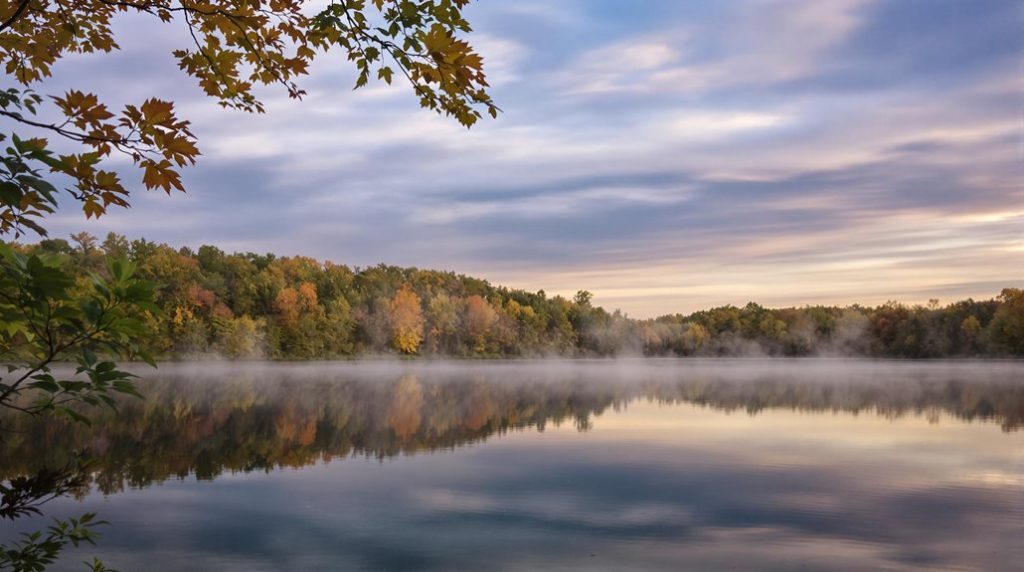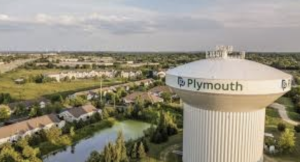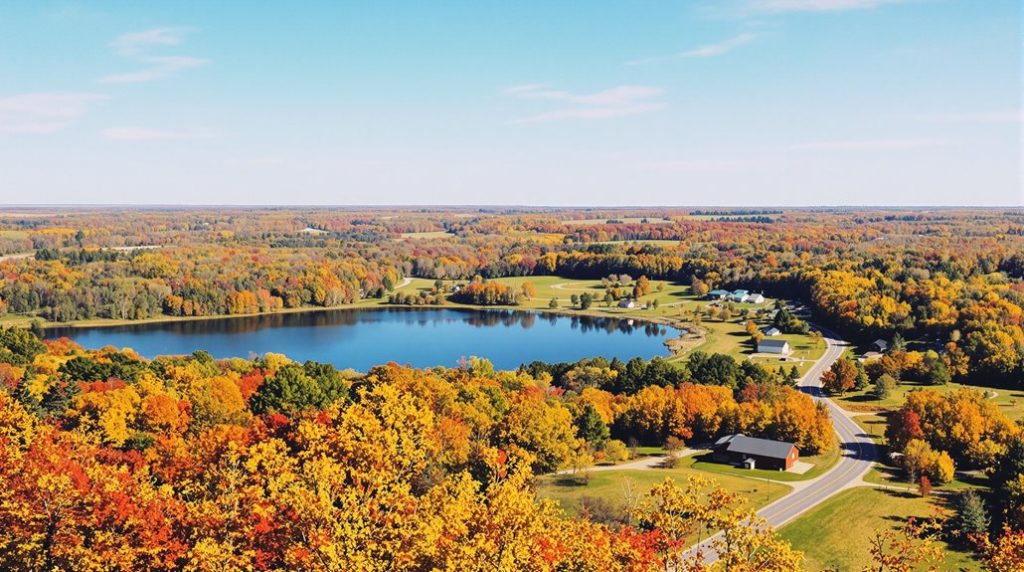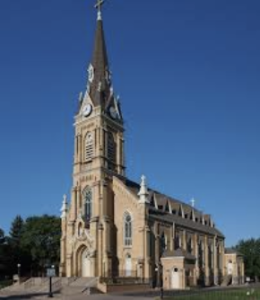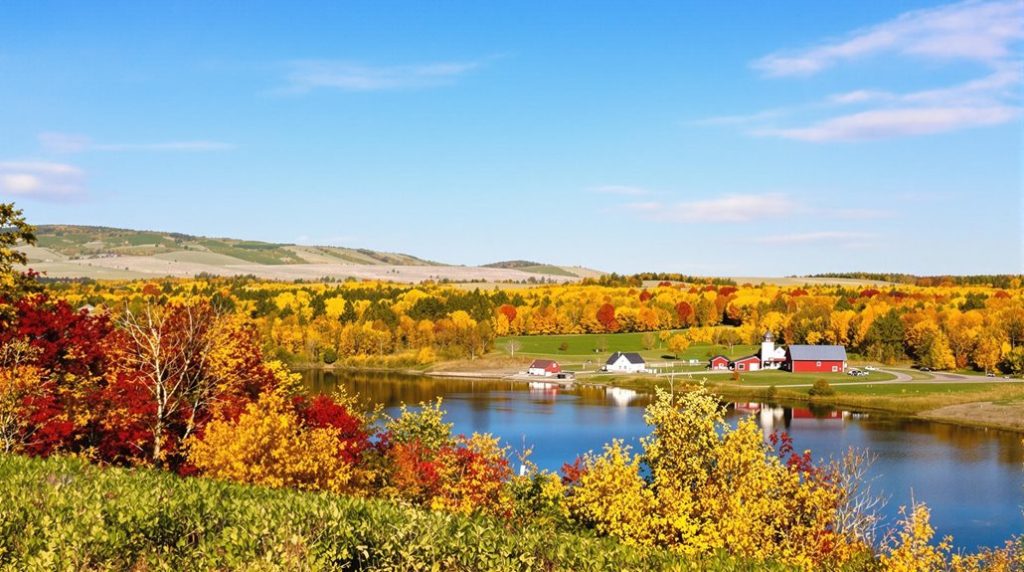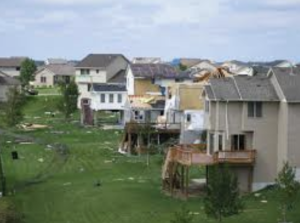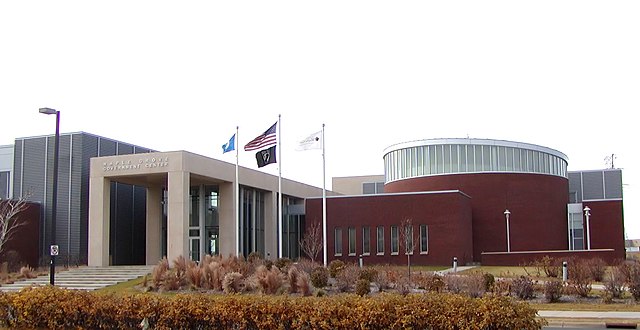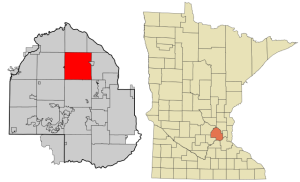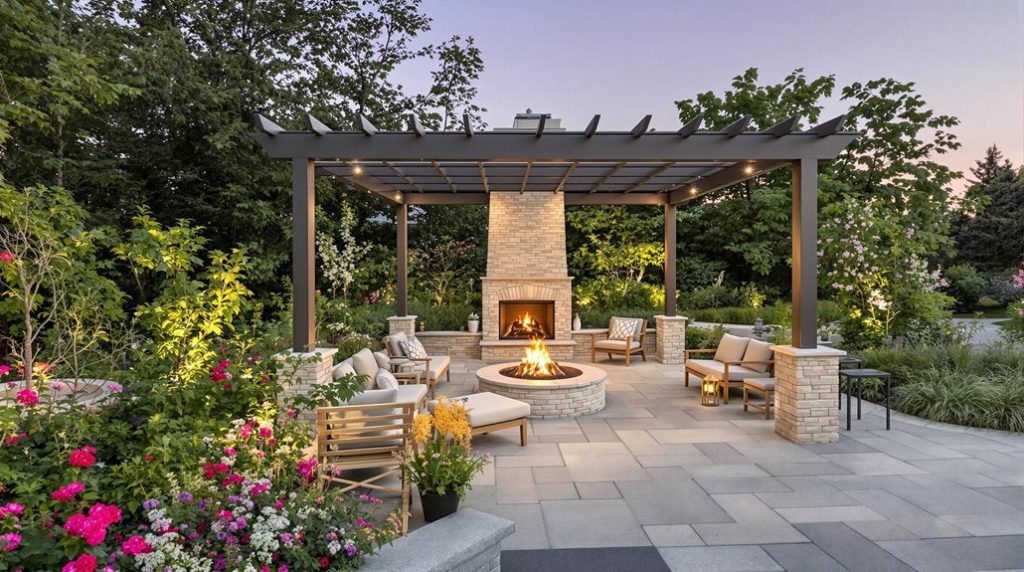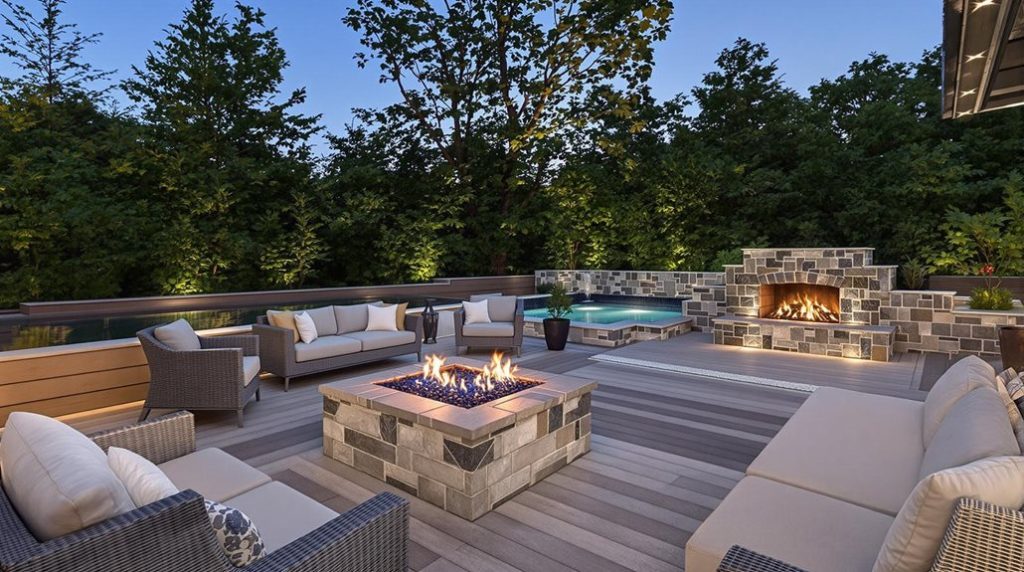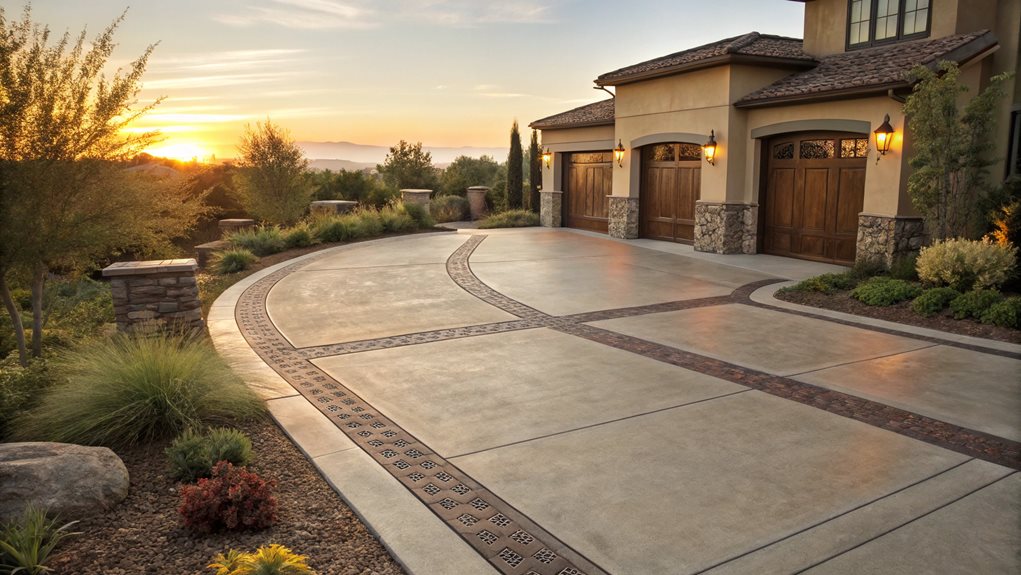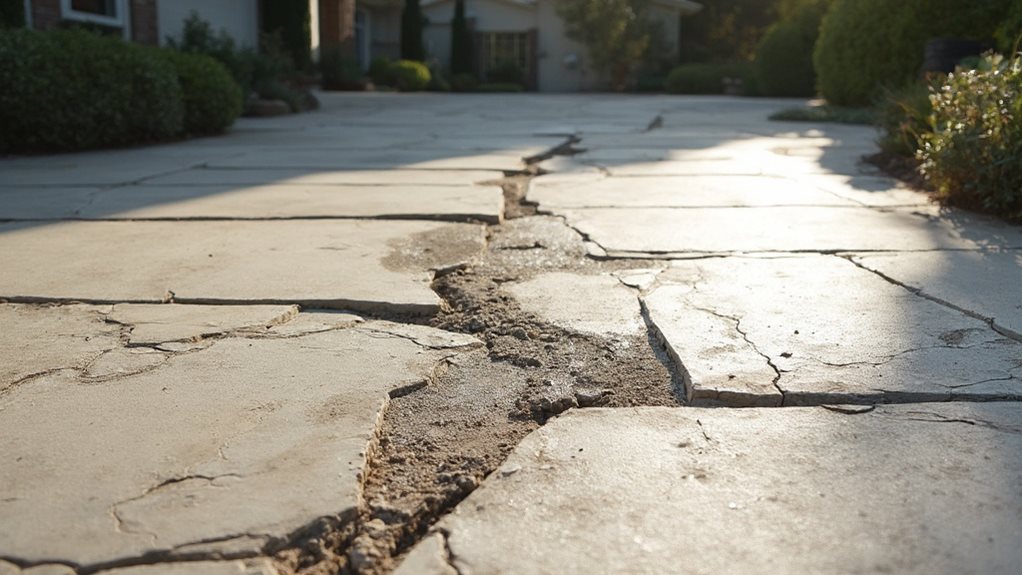Posts by Admin
Brooklyn Park MN
Brooklyn Park, Minnesota, offers a rich blend of natural attractions and cultural diversity. Along the Mississippi River, it boasts over 60 parks and 120 miles of trails, complemented by stunning views at Mississippi Gateway Regional Park. The community is enriched by multilingualism, international cuisines, and cultural festivals. Historic sites like Eidem Farm provide insight into rural life, while public golf courses and kayaking opportunities enhance outdoor activities. Further exploration reveals a vibrant tapestry of community and cultural experiences.
Expert Highlights
- Located along the scenic Mississippi River in Minnesota.
- Features over 60 parks and 120 miles of trails.
- Home to Mississippi Gateway Regional Park.
- Diverse community with international cuisines available.
- Rich in historic sites like the Historic Eidem Farm.
Natural Attractions
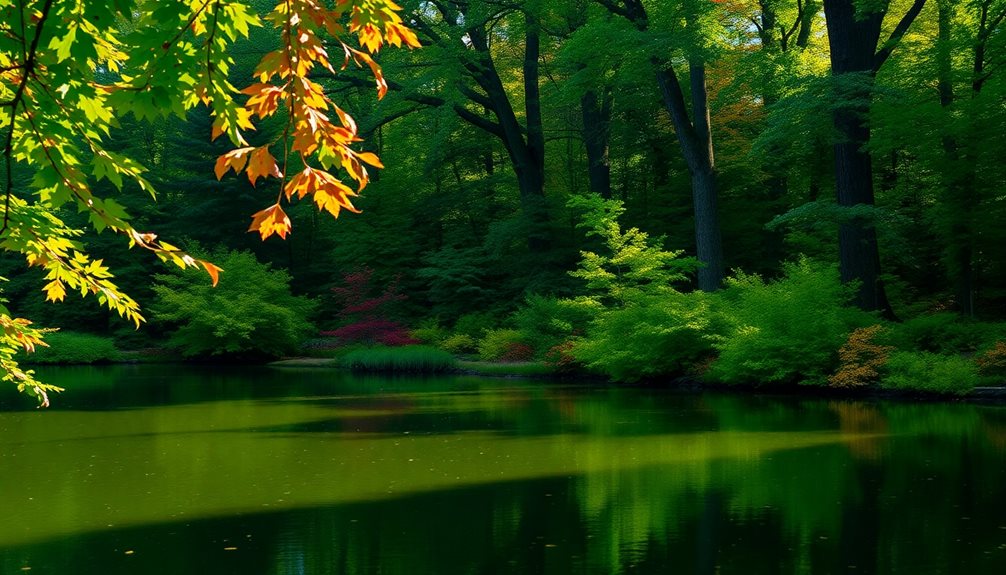
As Brooklyn Park, Minnesota, boasts an extensive park system, it offers a rich tapestry of natural attractions, complemented by its scenic position along the Mississippi River.
The city features over 60 parks, encompassing nearly 2,000 acres of parkland and 120 miles of trails, providing ample opportunities for outdoor activities. Notable attractions include Mississippi Gateway Regional Park, offering stunning river views and diverse wildlife, and the Environmental Nature Area, a newer addition with a dog park and expansive green spaces.
These natural sites enhance both local quality of life and visitor experiences. Visitors can discover hidden gems throughout Brooklyn Park’s diverse recreational spaces.
Cultural Diversity and Cuisine
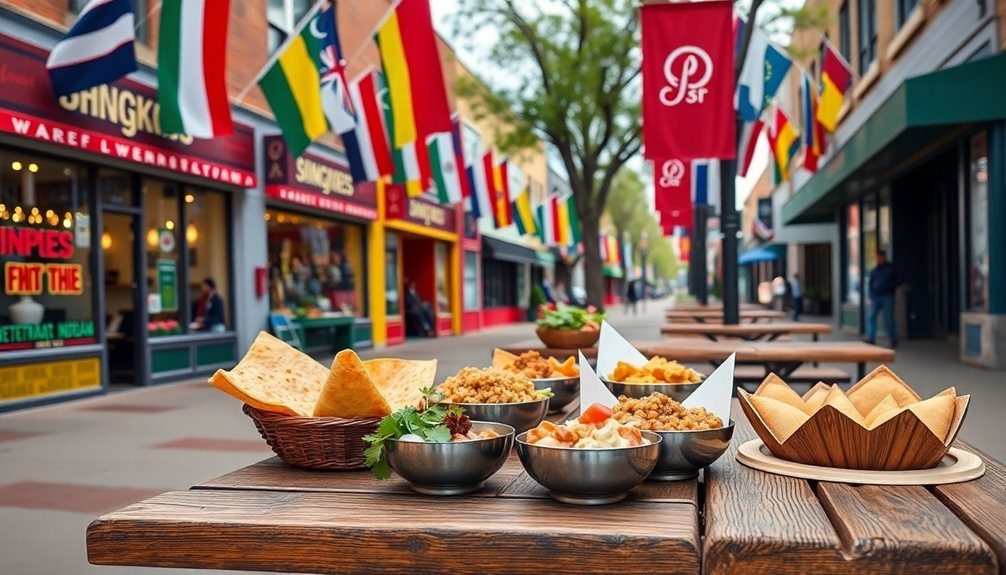
Brooklyn Park, Minnesota, exhibits a vibrant cultural diversity, with over half of its population comprising people of color, making it a dynamic and inclusive community.
Brooklyn Park, Minnesota, shines with its vibrant cultural diversity, fostering a dynamic and inclusive community.
This diversity enriches the local cuisine with influences from various global traditions. Key aspects of Brooklyn Park’s cultural richness include:
- Multilingualism: Over 26% of residents speak a language other than English at home.
- International Cuisine: Local eateries offer African, Asian, and Latin American flavors.
- Cultural Festivals: Community events like the Asian New Year Celebration enhance cultural exchange.
Just a short drive from St. Louis Park, residents can explore additional ethnic restaurants and cultural attractions in the neighboring community.
Historic Sites
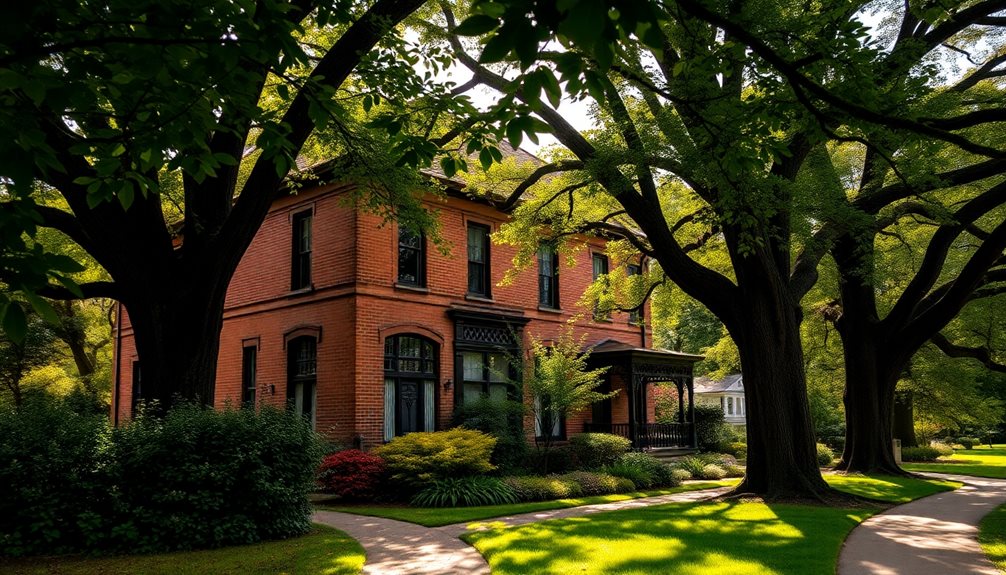
Historic sites in Brooklyn Park, Minnesota, offer a glimpse into the region’s rich past, where the footsteps of early Native American inhabitants gave way to pioneering settlers and eventual development.
A notable historical landmark is the Historic Eidem Farm, formerly known as the Eidem Homestead, which provides insight into rural Minnesota life at the turn of the century through guided tours and living history events.
Visitors can explore restored farm buildings, including a late 19th-century barn, and engage in hands-on activities that highlight traditional practices.
Like the nearby town of Independence, Minnesota, the area showcases the enduring spirit of early Midwestern settlers who shaped these communities.
Community and Outdoor Activities**
Community and outdoor activities in Brooklyn Park, MN, flourish with a wide array of options that cater to diverse interests and age groups, reflecting the city’s vibrant and inclusive culture.
The city boasts over 60 parks, numerous trails, and exciting recreational programs. Hidden gem destinations like Rogers offer nearby alternatives for outdoor enthusiasts seeking additional recreation options.
Notable activities include:
- Parks and Trails: Over 2,000 acres of parkland and 120 miles of trails.
- Kayaking: Exploring the Mississippi River through the Paddle Share program.
- Golf Courses: Two public courses, including Brookland Golf Park and Edinburgh USA.
 Expert Final Thoughts
Expert Final Thoughts
Brooklyn Park, Minnesota, is distinguished by its rich natural attractions, including over 60 parks and 120 miles of trails. The city boasts cultural diversity, hosting numerous international restaurants, and historic sites like the Eidem Farm. Community and outdoor activities, such as golfing and kayaking, are aplenty. With its unique blend of nature, history, and cultural experiences, Brooklyn Park offers a vibrant setting for residents and visitors alike, contributing to its status as a thriving community.
Plymouth, MN
Plymouth, Minnesota, is a thriving suburb with a rich history dating back to the 1850s, when pioneers settled the area. Officially incorporated in 1858, it merged with Medicine Lake Village in 1955. The city boasts a strong economic foundation, diverse cultural venues, and natural attractions like French Regional Park. Its robust educational system and strategic urban planning contribute to its appeal, positioning it as a desirable community with a promising future, offering more insight into its development and growth.
Expert Highlights
- Plymouth, MN, was settled in the 1850s by farmers and fur traders.
- It was officially incorporated in 1858 and merged with Medicine Lake in 1955.
- The city hosts cultural events and showcases local art.
- French Regional Park and lakes offer outdoor activities.
- Major industries include healthcare and technology.
History and Development
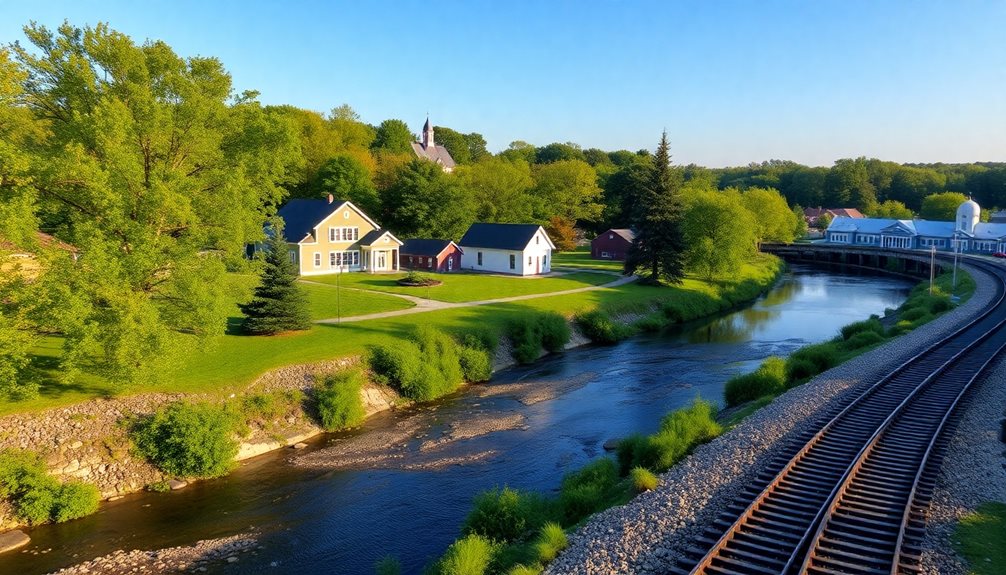
The history and development of Plymouth, Minnesota, unfold over several decades, beginning with its early settlement by pioneering farmers and fur traders in the 1850s.
The area’s fertile lands and strategic location attracted settlers, who cultivated the land and established a thriving agricultural community. Plymouth officially incorporated in 1858, later merging with Medicine Lake Village in 1955, marking significant growth and change into a modern suburban hub.
The city’s strategic urban planning guaranteed balanced development, contributing to its status as a vibrant and thriving community today. As the city grew, it attracted experienced contractors like Legacy General Services to support its expanding residential and commercial construction needs.
Community and Cultural Scene
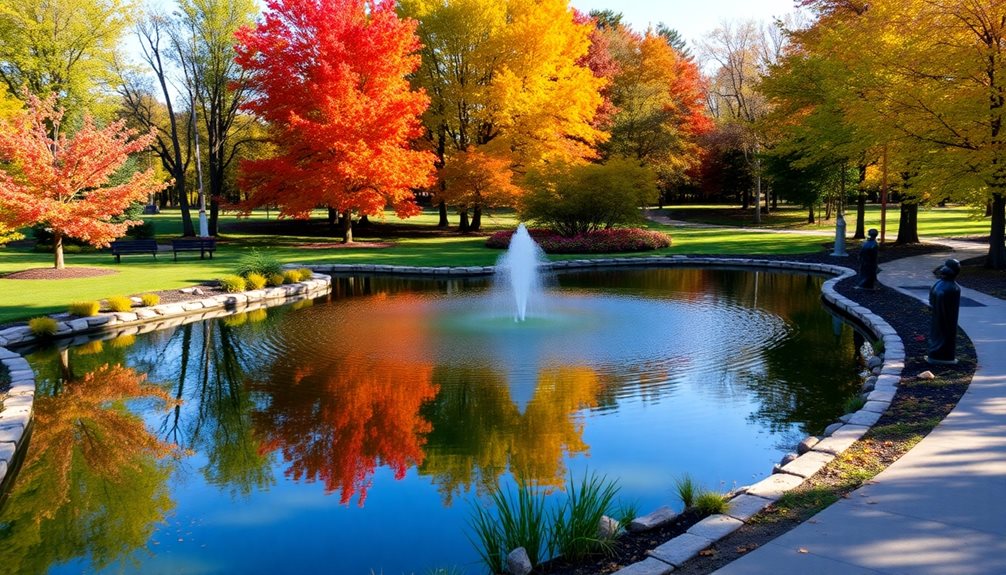
Plymouth, Minnesota, is renowned not only for its historical development but also for its vibrant community and cultural scene, which have evolved markedly over the years.
The city hosts various cultural events and venues, including the Plymouth Playhouse, known for showcasing local theater talents, and the Hilde Performance Center, which features outdoor performances by local musicians.
Additionally, the Plymouth Arts Council promotes visual arts through exhibitions and art fairs, fostering a diverse and inclusive artistic community that engages residents and visitors alike.
Professional contractors provide essential services that enhance both residential and commercial spaces throughout Plymouth’s growing cultural district.
Natural Attractions and Outdoor Activities
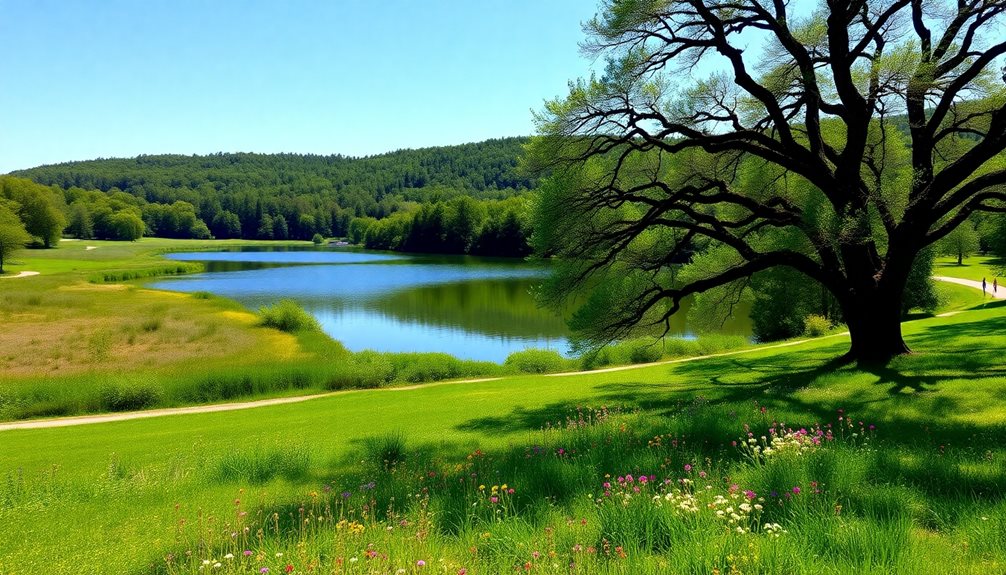
A diverse array of natural attractions and outdoor activities enriches the lives of residents and visitors in Plymouth, MN.
French Regional Park offers extensive trails ideal for hiking and biking, alongside well-maintained picnic areas and playgrounds for family outings.
Medicine Lake and Parker’s Lake Park provide serene lakeside views, fishing piers, and boat launches, catering to both casual and serious anglers.
The Luce Line Trail offers scenic biking routes, while Medicine Lake Regional Trail is perfect for bird watching and nature walks.
Local contractors ensure these outdoor spaces remain accessible year-round with concrete apron installation that prevents water pooling and maintains safe pathways.
Economic Landscape and Education**
In addition to its wealth of natural attractions, Plymouth, Minnesota, is distinguished by a strong economic foundation and a robust educational system.
The city’s economy is bolstered by major industries such as healthcare, technology, and insurance, with key employers like Medtronic and TCF Bank contributing to its vibrancy. Recent shifts in the job market highlight the growth of healthcare and tech sectors, offering residents diverse employment opportunities.
Educationally, Plymouth boasts high academic standards, with several schools recognized for excellence, creating a desirable environment for families. The area’s development continues to thrive with concrete solutions experts providing essential infrastructure support for both residential and commercial projects.
Expert Final Thoughts
Plymouth, Minnesota, offers a blend of rich history, vibrant culture, and modern economic development. Its transformation from a small agricultural settlement to a thriving suburban city highlights resilience and strategic planning. Cultural attractions, natural beauty, and a strong educational system contribute to its appeal. With ongoing infrastructure projects and a commitment to preserving heritage, Plymouth continues to evolve as a desirable place to live and visit, balancing tradition with progressive growth.
Saint Michael, MN
Saint Michael, Minnesota, has experienced significant population growth, averaging 5.40% annually since 2000, reaching approximately 21,034 residents in 2023. The community is primarily White, with a high median household income of $130,814. Attractions include Fox Hollow Golf Club and Becker Big Woods. Its economy is strong, with a low unemployment rate and projected job growth exceeding the national average. Exploring further reveals a city with economic resilience and engaging community activities.
Expert Highlights
- Located near the Twin Cities, MN.
- Notable attractions include Fox Hollow Golf Club and St. Michael Cinema.
- Racially diverse with 87.3% White residents.
- Strong economy with high median household income.
- Thriving community with various recreational activities.
Demography and Growth
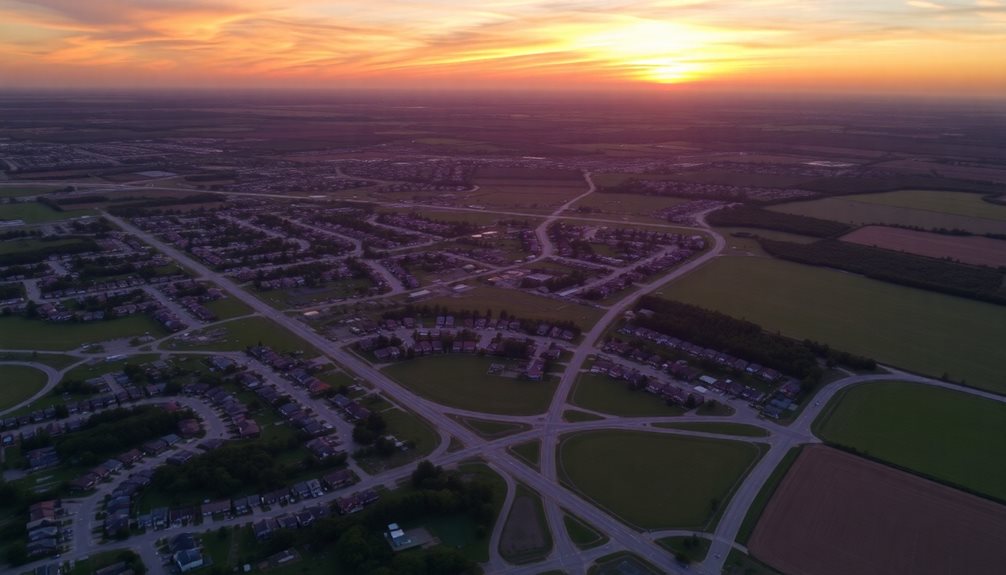
What factors contribute to the demographic make-up and growth of St. Michael, MN? The population of St. Michael has experienced significant growth, with an average annual increase of 5.40% from 2000 to 2023.
As of 2023, the city's population stands at approximately 21,034. Racially, the city is mainly White at 87.3%, followed by Black and Two or More racial groups.
The median household income is high at $130,814, reflecting a prosperous economic environment. This growth prompts an examination of both demographic shifts and economic drivers. The city's development has been supported by qualified contractors who ensure professional-grade construction and long-term durability in residential and commercial projects.
Attractions and Activities
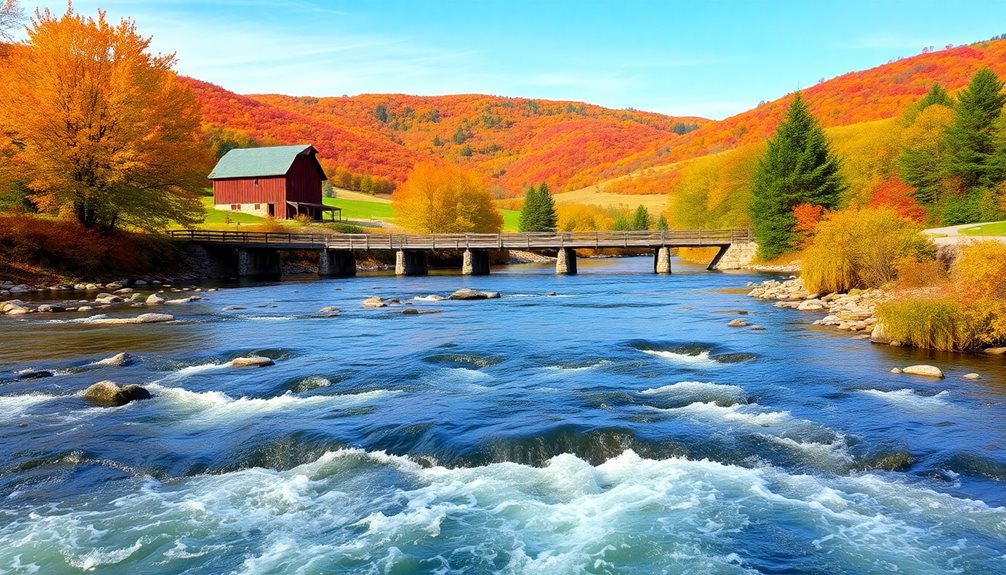
As one explores St. Michael, attractions and activities are diverse and engaging. The city offers several facilities like St. Michael Cinema, Fox Hollow Golf Club, and outdoor spaces like Becker Big Woods. For community service, St. Michael involves residents in various events throughout the year. Local residents can rely on concrete contractor services from experienced professionals in the Twin Cities metropolitan area.
| Attraction | Description | Features |
|---|---|---|
| St. Michael Cinema | Offers movies and events | Le Musique Room |
| Fox Hollow Golf Club | Golfing with scenic views | Palmgren Lane |
| Becker Big Woods | Nature walks and wildlife spotting | Hiking trails |
| Recreation Center | Ice skating and hockey during winter | Pleasure rink |
These attractions foster community interaction and recreational avenues.
Economy and Lifestyle
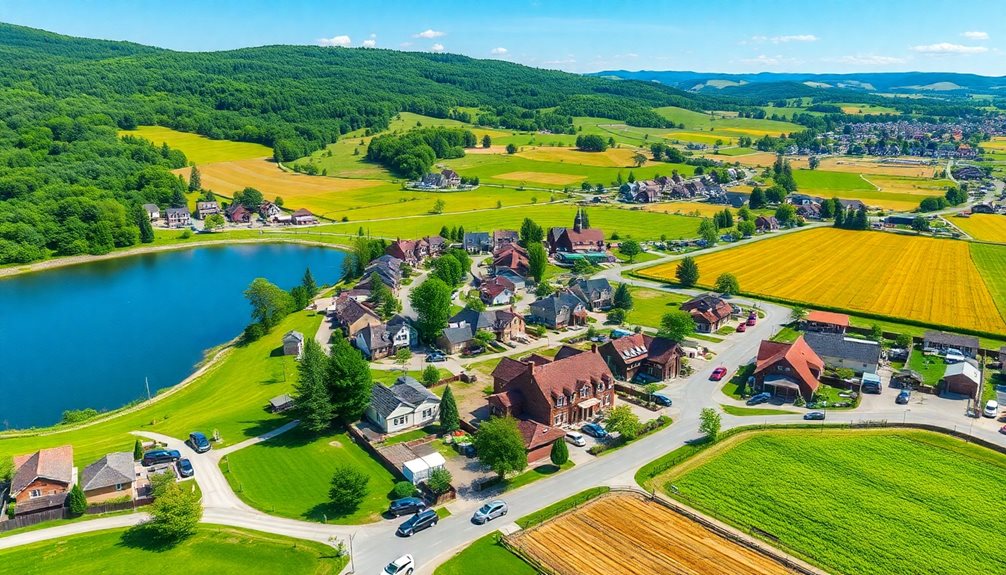
The economy of Saint Michael, Minnesota, is characterized by a blend of residential growth, local businesses, and strategic infrastructure developments.
Its unemployment rate, at 4.5%, is lower than the national average, though the job market has seen a slight decline recently. Benefiting from a strong median household income of approximately $130,814, the community exhibits economic resilience.
Future job growth is projected at 36.1% over the next decade, surpassing the national average. This, alongside low poverty rates, underscores Saint Michael's economically favorable environment for residents and businesses alike.
Local contractors like Legacy General Concrete Services contribute to property values through custom stamped concrete installations that enhance residential and commercial spaces.
Popular Places to Visit**
Saint Michael, Minnesota, offers visitors an array of attractive places to explore, complementing its economically vibrant environment with diverse cultural, entertainment, and outdoor activities. When exploring the area's walkways, visitors can enjoy durable concrete sidewalks that typically last up to 30 years with proper care.
Some popular places include:
- Fox Hollow Golf Club: A family-friendly area offering a round of golf.
- Fieldstone Pond Nature Reserve: Known for its scenic sunsets.
- Gutzwiller Park: Ideal for enjoying natural settings.
- Crow-Hassan Park Reserve: Features trails through prairie land, perfect for hiking and nature exploration.
Expert Final Thoughts
To sum up, St. Michael, Minnesota, exhibits robust demographics with a projected 2025 population of 23,220, showcasing a 5.2% annual growth rate. The city's economy is bolstered by a high median household income of $130,814 and a strong employment rate. With a mix of cultural and outdoor attractions, St. Michael offers a balanced lifestyle, combining education opportunities and family-friendly environments. Its diverse activities cater to a broad community base, fostering a vibrant local culture.
Rogers, MN
Rogers, MN is a vibrant community within the Twin Cities metropolitan area, offering a blend of urban and rural landscapes. It features family-friendly neighborhoods, engaging schools in Independent School District 728, and amenities like the Rogers Activity Center. Attractions include the Ellingson Car Museum and outdoor recreational spaces. Economic growth is driven by housing and industrial developments, enhancing the city’s appeal for both residents and businesses. For a deeper exploration of Rogers’ unique blend of lifestyle and development opportunities, further details await.
Expert Highlights
- Rogers, MN is a suburban city with a strong community focus near Minneapolis.
- Home to the Rogers Activity Center for ice skating and hockey.
- Located in ISD 728, offering quality education options.
- Attractions include the Ellingson Car Museum and outdoor recreation areas.
- Experiencing economic growth through housing and industrial developments.
Community and Lifestyle
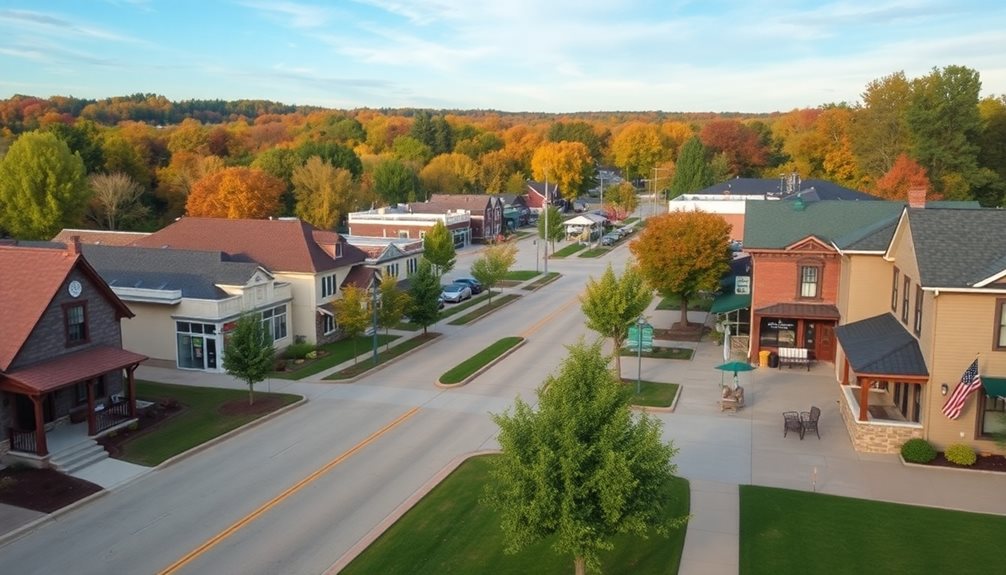
Rogers, MN, offers a vibrant community lifestyle, underscored by its strategic location within the Twin Cities metropolitan area.
Residents benefit from access to amenities, parks, and recreational areas. The city’s schools, part of Independent School District 728, prioritize student engagement and technology.
Residents enjoy access to amenities, parks, and recreational areas, complemented by engaging schools in Independent School District 728.
Family-friendly neighborhoods are prevalent, with 65% of residents being married couples.
The lifestyle caters to various interests, including active seniors at facilities like The Wellstead of Rogers, which offers chair yoga and cultural events.
Local homeowners can enhance their properties with concrete installation services from experienced contractors serving the Twin Cities region.
Education and Amenities
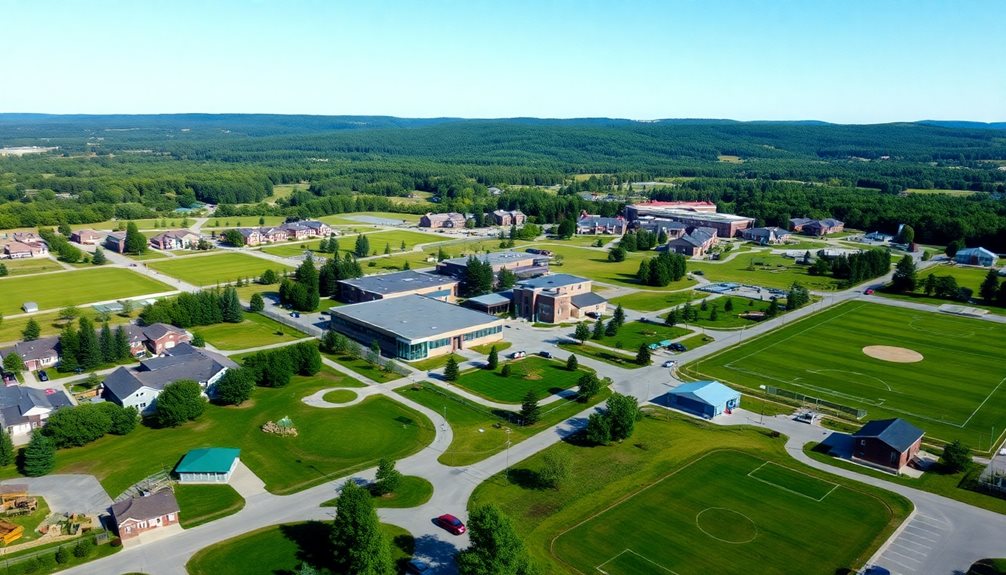
Situated at the intersection of two regional roadway systems, Interstate 94 and Trunk Highway 101, the community surrounding Rogers benefits from a unique blend of urban services and rural landscapes, enhancing access to educational and recreational amenities. For construction needs, residents rely on trusted concrete solutions from local professionals serving the Twin Cities area.
| School | District | Grade Levels |
|---|---|---|
| Rogers High School | Elk River Area 728 | 9-12 |
| Rogers Elementary School | Independent District 728 | K-4 |
| Hassan Elementary School | Independent District 728 | K-4 |
| Parnassus Prep School-Grammar | Parnassus Preparatory | K-4 |
| North Woods Elementary* | Wayzata Public Schools | PK, K-5 |
Attractions and Activities
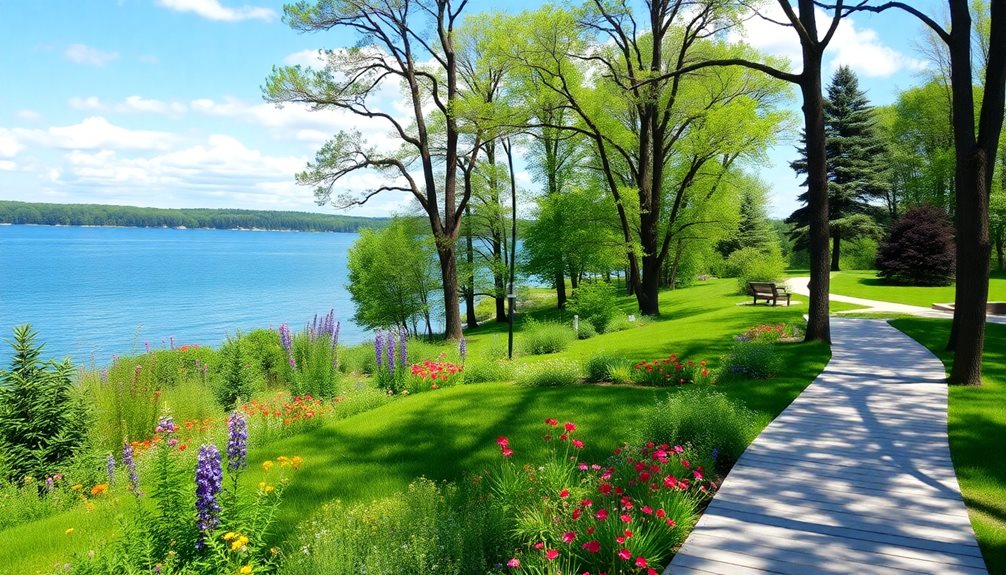
In the heart of Minnesota’s leisure and entertainment landscape, numerous attractions and activities flourishing around Rogers offer visitors a diverse range of experiences.
The Ellingson Car Museum and Gateway Antique Mall are popular spots for enthusiasts. Additionally, Rogers boasts outdoor options like Crow-Hassan Regional Park, ideal for hiking and camping, and fine dining experiences at movie theaters like Emagine Theatres, which offers luxurious movie-going experiences with gourmet food options.
Community events, such as live music and farmers’ markets, further enhance the city’s appeal. The area features extensive professional concrete services that have helped shape the city’s infrastructure and recreational spaces.
Economic Growth and Developments**
Beyond its vibrant leisure scene, the region surrounding Rogers, MN, is experiencing notable economic growth, driven by strategic developments in housing and industrial sectors.
The city has approved over 400 housing units, positioning it as a top housing development site in Minnesota. Industrial growth includes companies like Heliene, with expansive manufacturing facilities.
Rogers’ unique location at I-94 and TH 101 enhances its attractiveness to businesses, offering competitive advantages such as affordability compared to nearby suburbs. This combination fosters a thriving employment base with over 11,000 jobs. The area’s infrastructure development includes concrete driveway installations that enhance property values and complement the region’s residential expansion.
Expert Final Thoughts
Rogers, MN, is a thriving suburban community known for its family-friendly environment and strategic location near key transportation routes. Its population of 13,295 residents benefits from reputable schools, diverse housing, and an economy bolstered by industrial activities. Attractions include parks, local eateries, and access to the Twin Cities. With new developments like Laurel Creek, Rogers continues to grow, offering residents a blend of natural beauty, modern amenities, and economic opportunities.
Maple Grove, MN
Maple Grove, Minnesota, is a thriving suburban community with approximately 70,000 residents, offering a blend of natural beauty and modern amenities. It boasts over 1,000 acres of parks and trails, vibrant shopping districts, and diverse housing options. Community events like the Maple Grove Farmers Market and Summer Concert Series foster a strong sense of community. With easy access to Minneapolis, residents enjoy both suburban tranquility and metropolitan conveniences. Further exploration reveals more about its unique cultural and economic attributes.
Expert Highlights
- Location: Situated northwest of Minneapolis in Hennepin County.
- Community: Offers a suburban lifestyle with metropolitan amenities.
- Outdoor Activities: Features over 50 parks and 55 miles of trails.
- Economy: Home to over 1,600 businesses and thriving shopping districts.
- Recreation: Includes the Maple Grove Community Center for family activities.
Community and Lifestyle
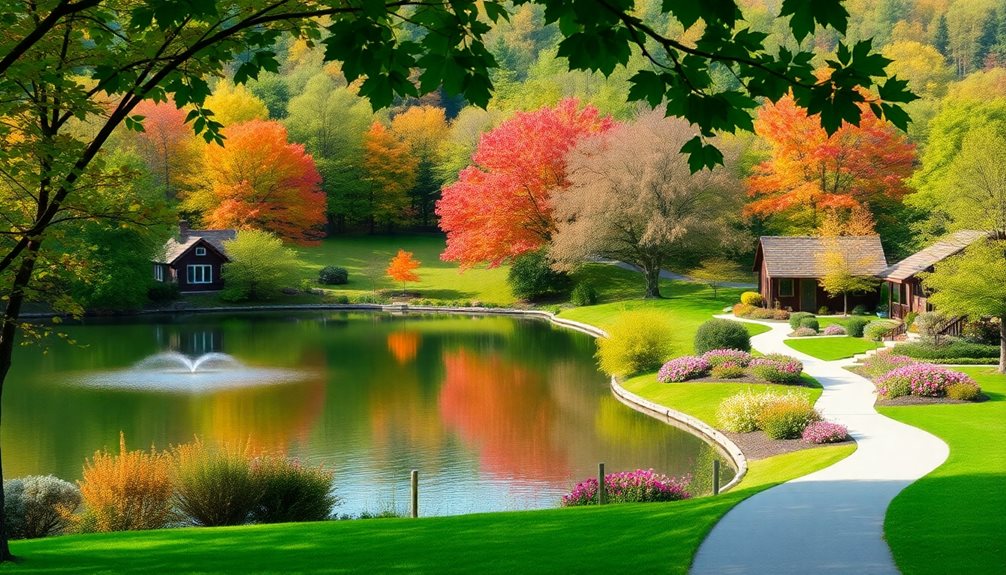
Maple Grove, Minnesota, embodies a thriving community lifestyle that harmoniously balances suburban tranquility with metropolitan amenities.
The city features over 1,000 acres of parks and trails, offering extensive recreational activities. Community events like the Maple Grove Farmers Market and Summer Concert Series at Central Park foster social connections, while vibrant shopping districts provide a blend of national retailers and unique local shops.
Educational options, healthcare facilities, and diverse housing choices further enhance the quality of life, making Maple Grove a desirable place to live. Its location near Minneapolis adds to its appeal. The area’s well-maintained neighborhoods feature durable concrete driveways that withstand Minnesota’s harsh weather conditions while requiring minimal upkeep.
Historical Landmarks
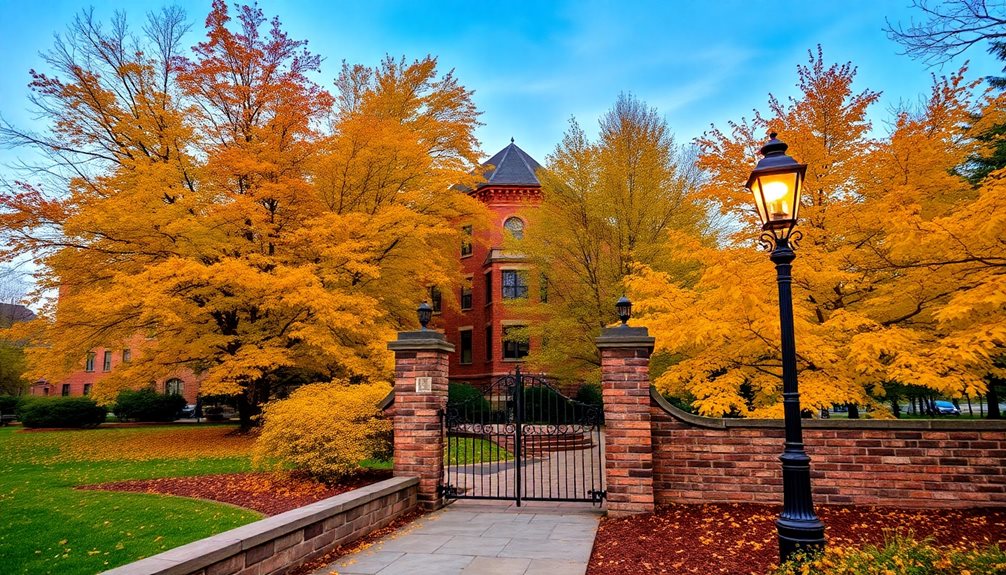
As part of its rich cultural heritage, the City of Maple Grove, Minnesota, boasts a variety of historical landmarks that not only showcase its past but also contribute to its appeal as a desirable community.
Notable sites include the Elm Creek Chalet, built in 1938, and the Pierre Bottineau House, which symbolizes early settlement.
The Maple Grove History Museum provides further insight, while Elm Creek Park Reserve highlights natural history and pioneering spirit, enriching visitors’ understanding of the city’s evolution.
Many local landmarks feature concrete installations expertly maintained by Twin Cities contractors to preserve their historical integrity.
Outdoor Recreational Opportunities
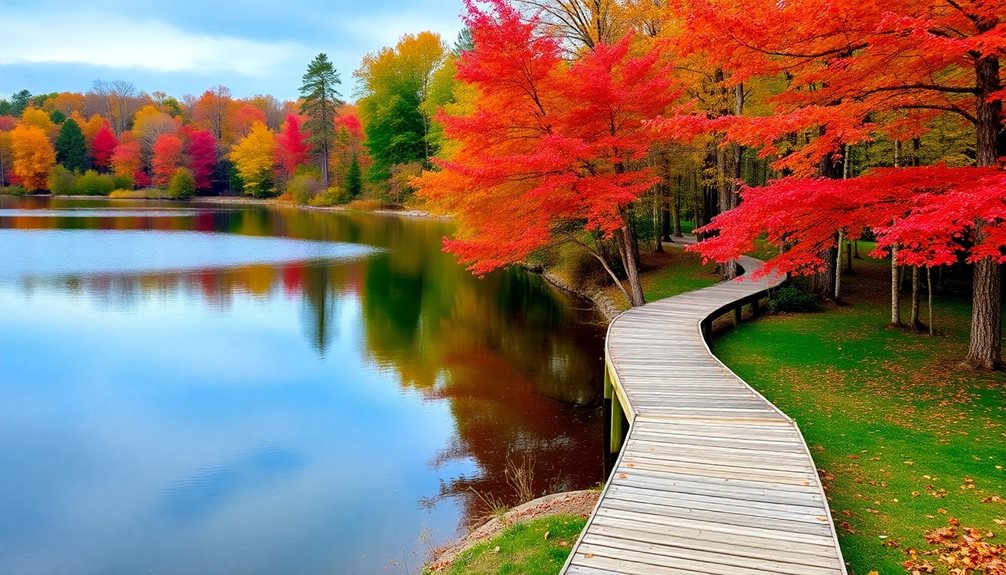
Offering a diverse array of outdoor recreational opportunities, the area surrounding Maple Grove is replete with engaging activities tailored to various interests and seasons.
The city boasts over 50 parks and more than 55 miles of trails, ideal for hiking, biking, cross-country skiing, and snowshoeing. Notable destinations include Elm Creek Park Reserve, which offers extensive trails, disc golf, and a tubing hill, and Central Park, featuring an 800-foot ice-skating loop.
Additionally, water activities such as boating and kayaking are available at local lakes. The city’s well-maintained concrete sidewalks and trails provide residents with safe, durable pathways that can last up to 30 years.
Economic and Cultural Development**
Beyond its vibrant outdoor scene, the area surrounding Maple Grove is actively fostering robust economic and cultural development.
Various initiatives are underway to enhance its appeal and diversify business offerings.
Key strategies include:
- Infrastructure Improvement: Upgrading roads and utilities.
- Business Diversification: Encouraging diverse industries like medtech and retail.
- Community Engagement: Strengthening partnerships through public-private collaborations.
- Marketing Initiatives: Building a distinct brand identity for Maple Grove.
These efforts aim to create a thriving community that supports its residents and attracts new businesses and visitors.
Local contractors like Legacy General Concrete Services provide custom stamped concrete solutions that enhance both residential and commercial properties in the area.
Expert Final Thoughts
Maple Grove, Minnesota, is a thriving suburban community offering an excellent balance of urban amenities and natural environments. With over 1,600 businesses, numerous lakes, and extensive parks, it provides residents with a high standard of living and diverse recreational opportunities. The city’s strong economic and cultural development, including a significant retail presence and varied dining options, enhance its appeal as a desirable place to live and visit.
How to Build Your Dream Outdoor Living Space
Creating a dream outdoor living space requires strategic planning across multiple dimensions, beginning with a thorough site analysis for ideal layout and traffic flow. The selection of weather-resistant materials, such as marine-grade stainless steel and solution-dyed acrylic fabrics, forms the foundation for durability. Distinct functional zones, including dining areas and conversation spaces, should be established with proper spacing and clearance. Strategic lighting, climate control features, and thoughtful plant placement enhance comfort and ambiance, while proper maintenance guarantees lasting enjoyment. Further exploration reveals specific measurements and material specifications essential for success.
Expert Highlights
- Plan your layout with careful consideration of sun exposure, traffic flow, and functional zones for dining, cooking, and relaxation areas.
- Select weather-resistant materials like marine-grade stainless steel and solution-dyed acrylic fabrics for furniture and cushions.
- Install proper lighting with LED path lights and string lights for safety and ambiance in evening hours.
- Create comfortable seating arrangements using circular or U-shaped configurations with adequate spacing between furniture pieces.
- Incorporate climate control features such as retractable awnings and outdoor heating elements for year-round enjoyment.
Planning Your Perfect Outdoor Layout
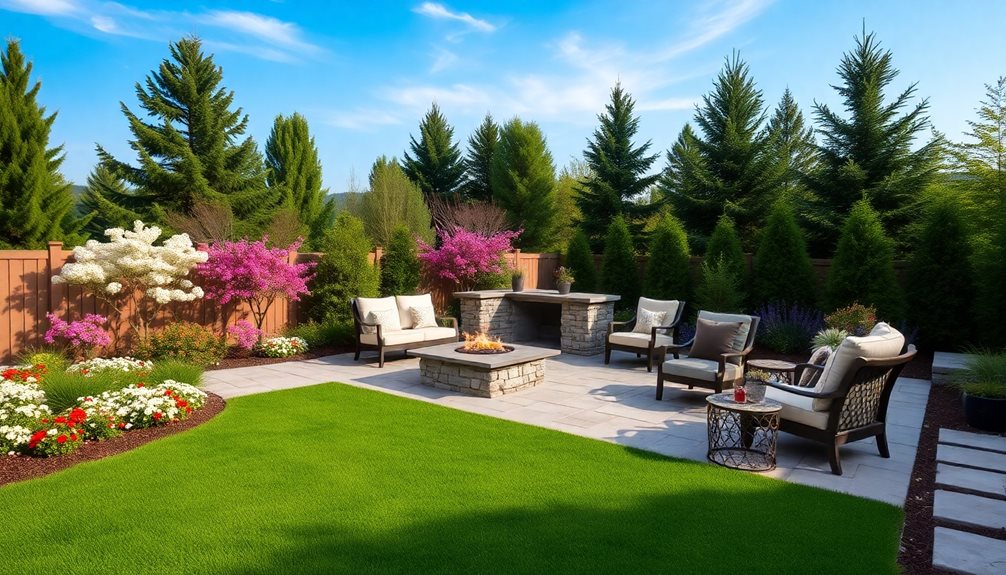
Before breaking ground on any outdoor living space, careful consideration must be given to the layout's functional requirements, spatial relationships, and environmental factors that will impact its success.
The design process begins with a thorough site analysis, documenting existing conditions such as sun exposure, prevailing winds, drainage patterns, and views. These elements inform the strategic placement of key features, including seating areas, cooking stations, and shade structures.
Traffic flow analysis guarantees seamless movement between zones while maintaining appropriate spacing for safety and comfort.
Standard measurements include 36-inch walkways, 24-inch clearance between seating, and 48-inch diameter turning spaces for accessibility compliance.
Professional installation of concrete walkways can provide durability lasting up to 30 years with proper maintenance.
Selecting Weather-Resistant Materials and Furniture
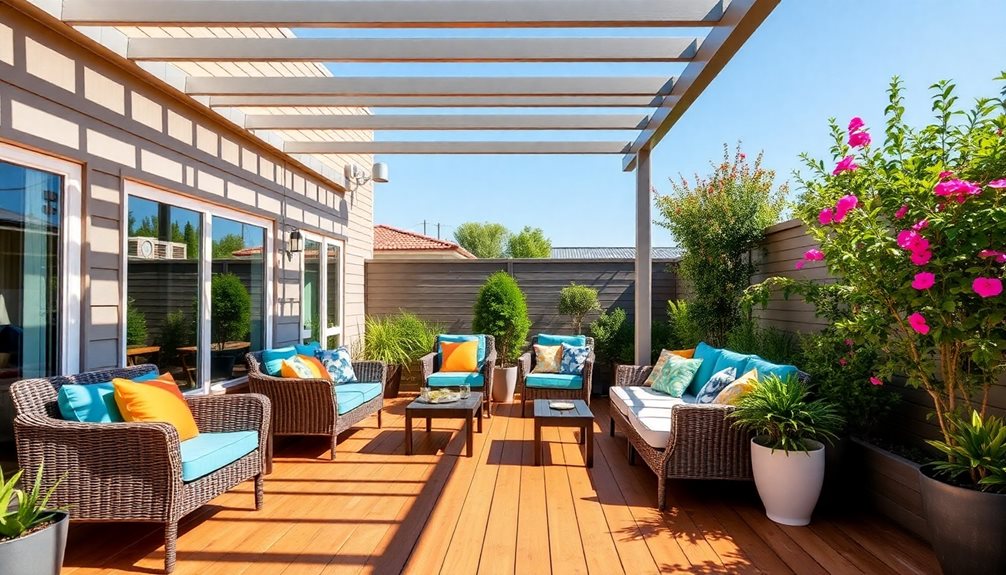
When designing an outdoor living space that will endure the elements, selecting appropriate weather-resistant materials and furnishings becomes a critical factor in ensuring long-term durability and performance.
For structural components, marine-grade stainless steel, powder-coated aluminum, and teak wood offer superior resistance to moisture, UV damage, and temperature fluctuations.
Solution-dyed acrylic fabrics, such as Sunbrella, provide fade-resistant cushions and upholstery rated for 5+ years of outdoor exposure.
High-density polyethylene (HDPE) furniture, featuring UV inhibitors and colorfast pigments, withstands extreme temperatures from -20°F to 120°F while maintaining structural integrity.
Concrete or porcelain pavers deliver slip-resistant flooring with minimal maintenance requirements.
Stamped concrete finishes offer a visually appealing and cost-effective alternative to natural stone while providing exceptional durability for outdoor spaces.
Creating Zones for Different Activities
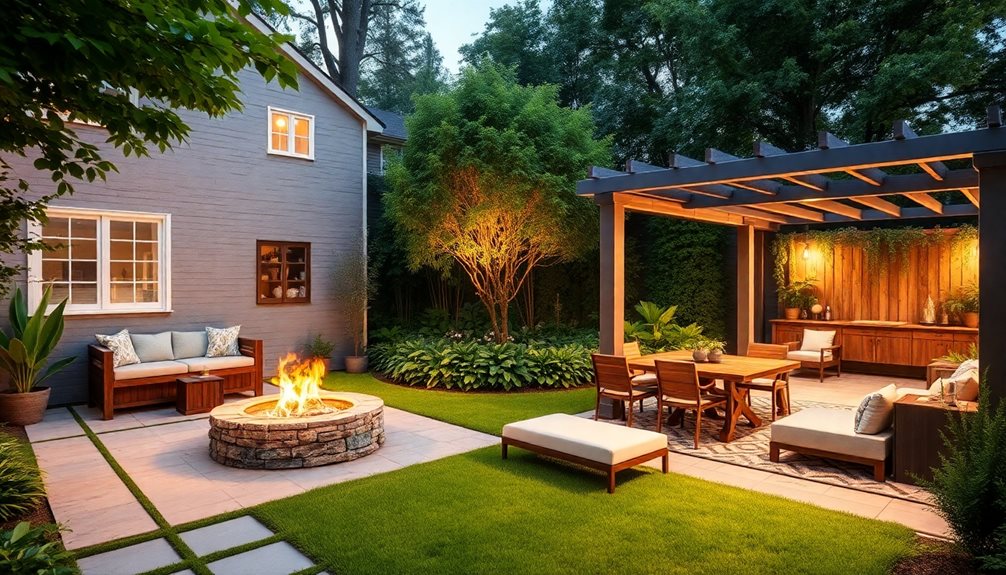
A successful outdoor living space incorporates distinct functional zones that allow for seamless changes between different activities and social gatherings. The primary zones typically include dining areas, conversation spaces, and cooking stations, strategically separated by walkways or connecting elements.
When designing these zones, spatial relationships become critical. The cooking area should maintain proximity to indoor facilities while remaining separate from relaxation spaces.
Conversation areas benefit from circular or U-shaped seating arrangements, while dining zones require adequate clearance for chair movement and service access.
Each zone should feature appropriate lighting, shade solutions, and storage elements specific to its intended function.
Similar to concrete driveway installation, proper grading and surface preparation are essential for creating stable, long-lasting outdoor living zones.
Essential Elements for Comfort and Ambiance
To create a truly inviting outdoor living space, homeowners must carefully incorporate essential comfort and ambiance elements that transform basic outdoor areas into welcoming sanctuaries.
- Strategic lighting installations, including LED path lights, adjustable overhead fixtures, and decorative string lights, establish both safety and atmosphere while extending usability into evening hours.
- Climate control features such as retractable awnings, misting systems, and outdoor heating elements guarantee year-round comfort regardless of weather conditions.
- Thoughtful acoustic elements, incorporating water features, strategic plant placement, and sound-absorbing materials, create an immersive environment while minimizing unwanted noise from surrounding areas.
A concrete patio installation provides a durable and low-maintenance foundation that requires up to 75% less upkeep than alternative outdoor flooring materials.
Expert Final Thoughts
Building an ideal outdoor living space requires careful consideration of layout, materials, zoning, and atmospheric elements. By thoughtfully selecting weather-resistant furnishings, establishing distinct functional areas, and incorporating essential comfort features like shade and lighting, homeowners can create a versatile extension of their indoor living space. With proper planning and attention to detail, an outdoor sanctuary can serve as a valuable investment in both property value and lifestyle enhancement.
Design Your Dream Outdoor Living Space With Style
Creating a dream outdoor living space requires strategic planning across five essential elements: functional layout, comfort zones, lighting design, weather protection, and durable foundations. A well-designed space prioritizes clear traffic patterns between activity zones, incorporates weather-resistant furniture and decor, implements layered lighting for ambiance, and utilizes climate-smart features like retractable awnings and heating solutions. Professional installation of concrete surfaces and proper drainage systems guarantees lasting durability, while thoughtful design elements transform ordinary patios into sophisticated outdoor sanctuaries that invite deeper exploration.
Expert Highlights
- Create distinct zones for lounging, dining, and cooking with clear pathways to ensure smooth traffic flow between areas.
- Install layered lighting with LED path lights, pendant fixtures, and spotlights to enhance ambiance and functionality after dark.
- Choose weather-resistant furniture with deep cushions, complemented by outdoor rugs and pillows for comfort and style.
- Incorporate adjustable shade solutions like retractable awnings or pergolas to maintain comfort throughout changing weather conditions.
- Install durable concrete surfaces with decorative finishes for long-lasting foundations that blend function with aesthetic appeal.
Essential Elements for a Functional Outdoor Layout
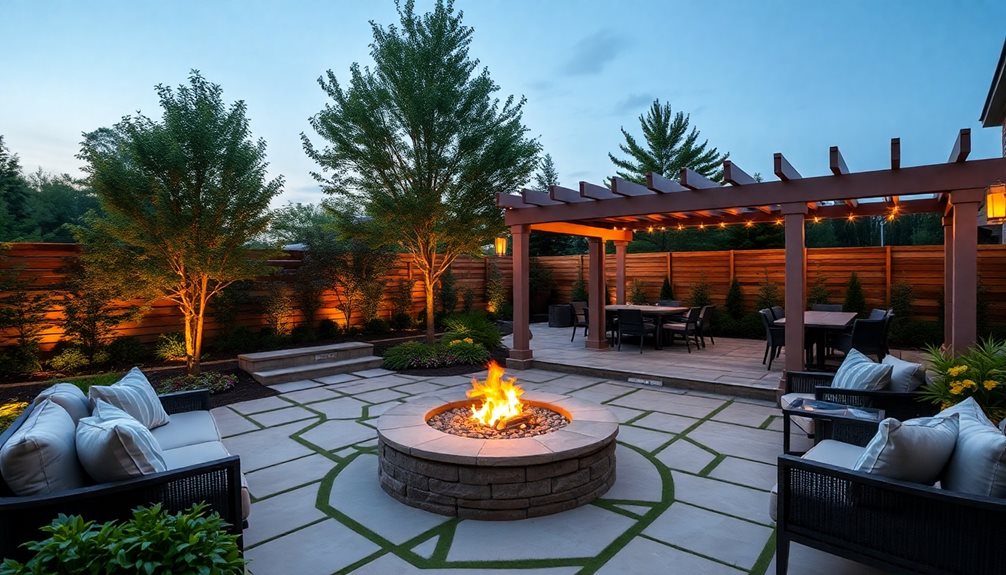
When designing a functional outdoor living space, careful consideration must be given to several foundational elements that work in harmony to create a cohesive and purposeful environment.
The layout must prioritize traffic flow patterns, establishing clear pathways between activity zones while maintaining appropriate spacing for furniture and equipment.
Smart outdoor design puts flow first, creating intuitive paths between spaces while ensuring furniture and features have room to breathe.
Key structural components include properly scaled seating areas, designated cooking zones, and adequate shade coverage through pergolas or natural canopies.
Weather-resistant surfaces, proper drainage systems, and strategic lighting placement guarantee year-round functionality.
Storage solutions, utility access points, and temperature control features complete the essential framework, enabling seamless shifts between indoor and outdoor living spaces.
A concrete patio installation provides durability and weather resistance while requiring minimal maintenance compared to other outdoor surface materials.
Creating Comfort Zones With Furniture and Decor
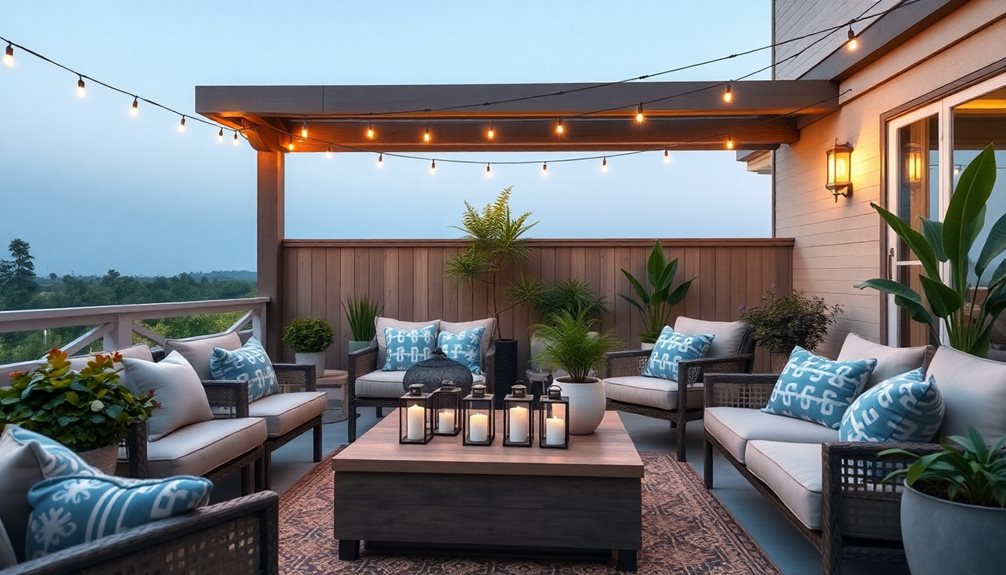
To establish inviting comfort zones within an outdoor living space, careful selection and strategic placement of furniture and decorative elements serve as the foundation for creating distinct functional areas.
Weather-resistant seating arrangements, including deep-cushioned sofas and swivel chairs, should be positioned to facilitate conversation while maximizing views of the surrounding landscape.
Layered lighting elements, such as overhead pendants, landscape spotlights, and tabletop lanterns, create ambiance while extending usability into evening hours.
Decorative all-weather throw pillows, outdoor rugs, and potted plants add warmth and texture, effectively defining separate zones while maintaining visual cohesion throughout the space.
Consider installing durable concrete sidewalks to create elegant pathways between your outdoor living zones, as they can last up to 30 years with proper maintenance.
Lighting and Ambiance for Day-to-Night Entertainment

Strategic lighting design transforms outdoor living spaces from daytime retreats into enchanting nighttime entertainment venues, requiring careful consideration of both natural and artificial illumination sources.
Layered lighting techniques incorporate three essential elements: ambient lighting for overall illumination, task lighting for functional areas, and accent lighting to highlight architectural features.
Well-positioned LED path lights, mounted at 14-16 inches height, guarantee safe navigation while creating visual interest.
Professional designers recommend combining multiple lighting types: low-voltage landscape lights (4-15 watts), weather-resistant pendant fixtures (25-60 watts), and adjustable spotlights (20-50 watts).
Strategic placement of fixtures at varying heights creates depth while minimizing harsh shadows and glare.
Stamped concrete surfaces provide an elegant foundation for outdoor lighting designs while offering durability that lasts over 25 years.
Weather-Smart Solutions for Year-Round Enjoyment
Maximizing outdoor living spaces throughout the changing seasons requires extensive weather protection solutions that address temperature extremes, precipitation patterns, and environmental challenges.
Retractable awnings and pergolas with adjustable louvers provide essential shade control while allowing ventilation. High-performance outdoor heaters, rated at 40,000 BTUs, extend evening gatherings into cooler months.
Flexible shade structures paired with powerful heating solutions create comfortable outdoor spaces that can be enjoyed regardless of weather conditions.
For moisture management, integrated drainage systems and permeable surfaces prevent water accumulation. Wind barriers, including tempered glass panels and strategic landscaping, create protective microclimates.
Durable materials like powder-coated aluminum and marine-grade fabric withstand UV exposure, salt air, and temperature fluctuations while maintaining aesthetic appeal. Professional installation of concrete driveways provides a lasting foundation that can endure up to 30 years of heavy use while complementing your outdoor design.
Expert Final Thoughts
A thoughtfully designed outdoor living space transforms an ordinary backyard into a sophisticated extension of the home, seamlessly blending functionality with style. Through careful consideration of layout, comfort features, lighting design, and weather-resistant elements, homeowners can create an inviting retreat that serves their needs year-round. By implementing these essential design principles and practical solutions, any outdoor area can become a versatile environment for relaxation, entertainment, and everyday living.
Expert Outdoor Patio Design & Installation Services
Expert patio design and installation services combine detailed planning, premium materials, and professional craftsmanship to create lasting outdoor spaces. The process begins with thorough site evaluation, addressing factors like drainage and slope requirements, followed by selecting durable materials such as natural stone or high-grade composites. Professional installation adheres to industry standards, incorporating custom features like built-in seating and lighting systems. Understanding the complete transformation process reveals how these spaces enhance property value while providing decades of enjoyment.
Expert Highlights
- Professional patio designers create scaled drawings and detailed plans to ensure precise execution and accurate cost estimation.
- Expert installers use premium materials like natural stone pavers and marine-grade fasteners for maximum durability and longevity.
- Installation follows strict industry standards, including proper site preparation, excavation depth, and drainage slope requirements.
- Custom features such as built-in seating, pergolas, and lighting systems enhance functionality and aesthetic appeal.
- Quality workmanship and materials combined with regular maintenance can provide up to 30 years of outdoor enjoyment.
Planning Your Perfect Patio Design: From Vision to Blueprint
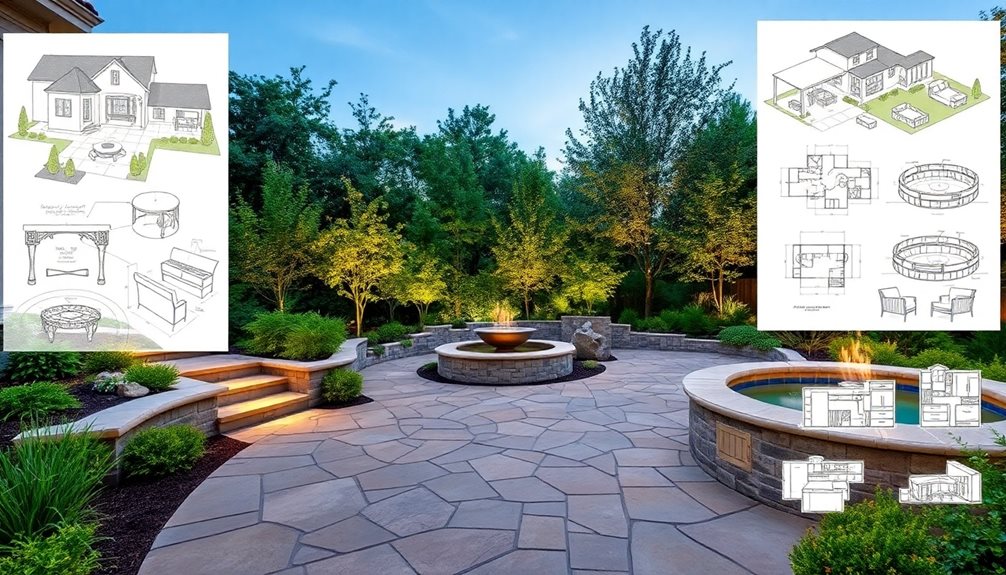
A well-designed patio begins with meticulous planning, careful consideration of spatial constraints, and a thorough understanding of the property's unique characteristics.
Professional designers evaluate key factors including ground slope, drainage patterns, and existing landscape features to develop optimal layout solutions.
The planning phase incorporates detailed measurements, material specifications, and structural requirements while accounting for local building codes and zoning regulations.
Designers create scaled drawings that precisely map the patio's dimensions, elevations, and integrated elements such as built-in seating, fire features, or outdoor kitchens.
This extensive blueprint serves as the foundation for accurate cost estimation, material procurement, and efficient construction execution.
Our experienced team creates designs that maximize the concrete patio benefits including reduced maintenance needs, weather resistance, and long-lasting durability.
Selecting Premium Materials for Long-lasting Results
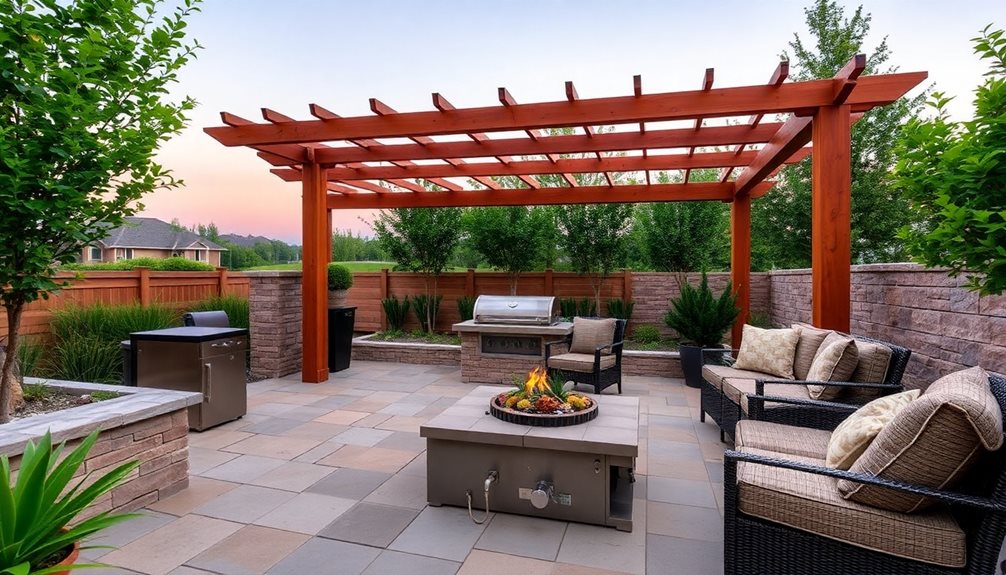
Premium material selection stands as the cornerstone of creating an enduring, aesthetically pleasing outdoor living space that withstands the elements while maintaining its beauty.
Natural stone pavers, including travertine and granite, offer superior durability with compression strengths exceeding 12,000 PSI.
High-grade composite decking materials, engineered with UV-resistant polymers and wood fibers, provide exceptional longevity while requiring minimal maintenance.
These materials resist fading, scratching, and mold growth through advanced manufacturing processes.
For structural elements, marine-grade stainless steel fasteners and pressure-treated lumber rated for ground contact guarantee maximum stability and corrosion resistance in outdoor environments.
Stamped concrete surfaces offer a cost-effective alternative to natural stone while providing durability that can exceed 25 years with proper maintenance.
Professional Installation Process and Construction Standards
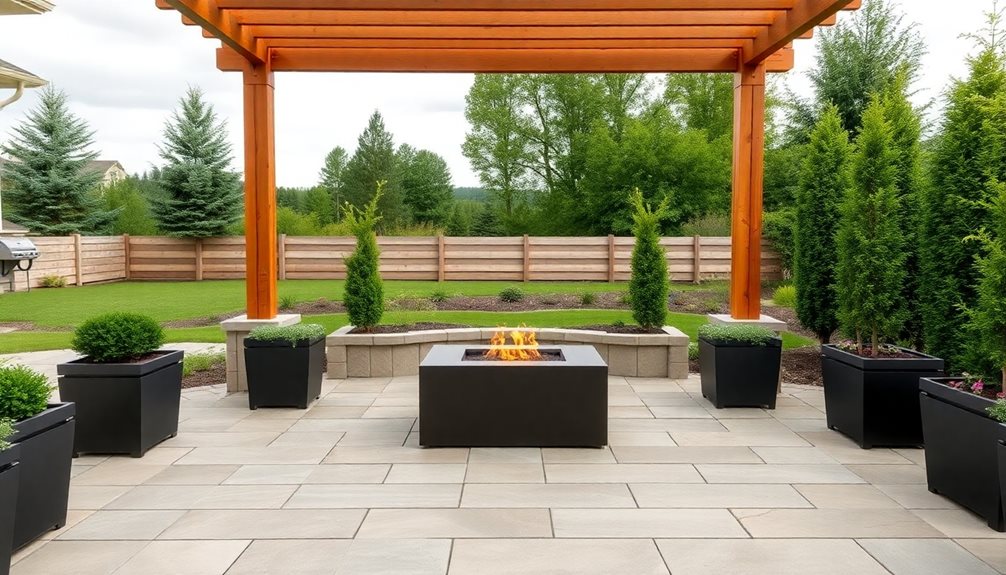
Executing professional patio installation demands rigorous adherence to industry standards and precise construction methodologies throughout every phase of the project. Each step requires careful attention to specifications, from initial site preparation to final finishing touches. Legacy General Services delivers exceptional concrete craftsmanship with over 10 years of industry expertise in the Twin Cities area.
| Phase | Key Requirements | Quality Standards |
|---|---|---|
| Planning | Site Survey, Permits | Local Code Compliance |
| Excavation | 4-6" Depth, Grading | 1% Slope for Drainage |
| Base Prep | Compacted Gravel | 95% Compression Rate |
| Installation | Material Placement | Level Within 1/8" |
| Finishing | Joint Filling, Sealing | Manufacturer Specs |
Professional installers utilize laser-level technology, engineered drainage solutions, and precise measuring tools to guarantee lasting structural integrity. This systematic approach assures that each patio meets strict construction standards while providing ideal functionality and durability.
Enhancing Your Outdoor Space With Custom Features
Transform ordinary patios into enchanting outdoor sanctuaries through the strategic integration of custom design features, which elevate both aesthetic appeal and functional versatility.
Elements such as built-in seating, pergolas, and customized lighting systems create distinct zones while maximizing available space.
Strategic design choices like integrated seating and overhead structures transform ordinary patios into defined living spaces that optimize every square foot.
Water features, including tiered fountains or cascading wall installations, introduce soothing ambient sounds while serving as dramatic focal points.
Climate-controlled elements, such as integrated misting systems and infrared heating units, extend seasonal usage capabilities.
Premium materials like hand-carved stone, architectural concrete, and marine-grade stainless steel guarantee longevity while delivering sophisticated design elements that complement existing architecture and landscaping features.
Professional installation ensures your outdoor space will provide up to 30 years of enjoyment with proper maintenance and care.
Expert Final Thoughts
A professionally designed and installed patio transforms any outdoor space into a functional extension of the home, providing years of enjoyment when executed with careful planning, premium materials, and expert craftsmanship. Through methodical design processes, material selection aligned with local climate conditions, and adherence to construction best practices, homeowners can achieve an outdoor living space that balances aesthetic appeal with long-term durability and practical functionality.
Best Concrete Ideas For Driveways
Looking to enhance your home's curb appeal with a concrete driveway? A myriad of design options like stained, stamped, or exposed aggregate concrete offer a unique, custom look. Minimalist designs provide understated elegance, while patterned driveways express vibrancy and creativity. Add borders or curbs for a finished touch or opt for a dark tone to mask stains over time. Remember, professional installation and good upkeep can yield a beautiful, durable driveway lasting up to 30 years. Keep exploring for more in-depth details and ideas.
Expert Highlights
- Minimalist concrete driveways provide long-lasting sophistication and enhance curb appeal with simplicity and high-quality materials.
- Patterned concrete driveways employ vibrant dye or stain colors and geometric designs for a cost-effective creative expression.
- Exposed aggregate concrete driveways offer diverse textures and colors, creating bespoke aesthetics complementing home exteriors.
- Adding curbs and borders to driveways aids in run-off prevention and amplifies visual appeal with various complementary materials.
- Stamped concrete driveways offer durability and low maintenance, with diverse patterns like brick, slate, and wood for increased aesthetic appeal.
Understanding the Basics of Concrete Driveways
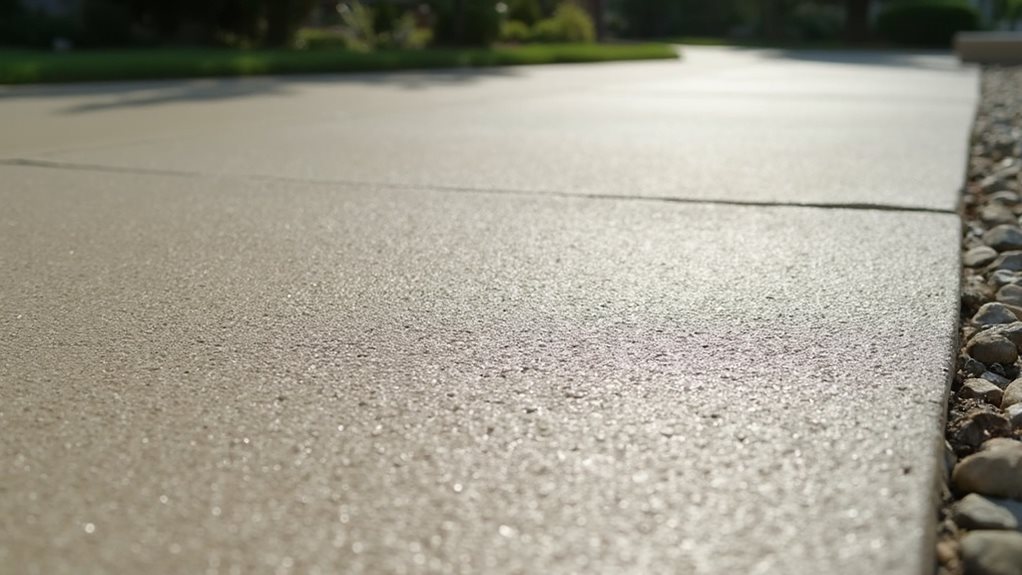
While you may generally overlook the importance of your driveway, it serves as more than just a pathway for vehicles. As part of your home's exterior, your driveway is the first impression visitors receive when they arrive.
It's a key part of creating a welcoming atmosphere. Concrete driveways, in particular, have become popular due to their versatility and durability. If you're considering this option, it's vital to understand the basics of concrete driveways.
These range from installation processes to the various types and finishes available. Before jumping into the next subtopic about the benefits, it's important to grasp these fundamental aspects.
With professional installation services, you can expect your concrete driveway to last up to 30 years when properly maintained.
Armed with this knowledge, you're set to make an informed choice, one that's conducive to a sense of genuine belonging in your home.
Benefits of Opting for a Concrete Driveway
You've learned how concrete driveways are installed, now consider why you might choose one for your property.
Not only are they extraordinarily durable, withstanding everything from unpredictable weather patterns to heavy vehicle traffic, but concrete driveways also offer budget-friendly solutions.
Plus, their design versatility allows you to tailor the look of your driveway to perfect your home's curb appeal.
With stamped concrete designs, you can achieve the luxurious look of natural stone or brick at a fraction of the cost while maintaining superior durability.
Durability of Concrete Driveways
Choosing a driveway material goes beyond mere aesthetics; you also need to take into account longevity, maintenance, and cost efficiency.
When it comes to durability, concrete driveways are an attractive choice. Their robust build doesn't just survive the harshness of weather and time – it thrives in it. You're part of a community that understands the value of long-lasting solutions.
- Concrete driveways can last upwards of 30 years with proper care.
- Unlike other materials, concrete holds up well under heavy loads, resisting cracks and damage.
- Concrete won't fade or deteriorate under the damaging UV rays of the sun.
Cost-Effective Driveway Solution
Beyond endurance and resilience, a concrete driveway also offers substantial economic benefits. You'll appreciate the budget-friendly aspect of this option.
Though the initial outlay might seem steep, with time it becomes the cost-effective choice, considering its durability. Unlike other materials that need frequent repair or replacement, concrete stands strong for decades, lowering long-term expenses for you.
The maintenance costs are minimal too. Occasional cleaning and sealing is all it requires to retain its look and performance. So, say goodbye to worry lines and unexpected costs springing up.
Besides, the value it adds to your property is undeniable. Potential buyers often prefer concrete driveways, positively impacting your home's resale value. After all, a sense of belonging comes from wise investments, doesn't it?
Versatility in Design Options
While the cost-effectiveness of a concrete driveway is undeniably attractive, the design versatility it offers is another compelling benefit.
Everything from color and pattern choice to texture and finish can be customized. You're not stuck with a one-size-fits-all scenario. Instead, you have the freedom to design a driveway that perfectly matches your home's aesthetic.
Consider these:
- Stamped Concrete: Mimics brick, cobblestone or even natural slate at a fraction of the price.
- Stained Concrete: A vast array of colors, hues, and shades to choose from.
- Exposed Aggregate: A touch of nature, revealing the beautiful textures of stone or gravel.
Embrace this versatility and enhance your property's curb appeal, as you join those who've discovered the beauty of concrete driveways.
From Ebony to Ash: Exploring Concrete Color Options for Your Driveway
When you think of concrete, don't restrict yourself to the standard grey!
It's not just durable, it's also incredibly versatile in hues — from dark ebony to light ash, and everything in between.
Trending color choices are broadening the palette even further, so let's get some tips on how to select the perfect color for your driveway.
Working with professional home consultants can help you explore color options while ensuring optimal installation results.
Versatile Nature of Concrete
You might think of concrete as dull, but this sturdy material is more versatile than you'd expect. It's flexible, allowing you to customize your driveway to your exact liking. Plus, it conforms to the shape and size that you need for your driveway.
- Concrete fits any shape: Laid wet, it easily molds to suit your driveway's layout.
- Concrete offers various finishes: You can go for a polished smooth, or a textured broom finish. It's even possible to add patterns to give it a unique appeal.
- Concrete blends well: It literally goes with any landscape, seamlessly weaving itself into your outdoor aesthetics.
You see, your driveway doesn't have to be just a driveway. It can be a statement piece, a part of your home that truly belongs. It's all in the versatility of concrete.
Trending Concrete Color Choices
Selecting the ideal color for your concrete driveway might seem like an overwhelming task. You're not alone.
Everybody wants their driveway to blend elegantly with the overall exterior while also injecting a pinch of personal style. Your driveway shouldn't just be a path to your garage; it's an extension of your home.
Now, consider this. Jet black, or 'ebony', concrete is all the rage these days due to its sleek, modern appeal.
On the other hand, the soft, understated beauty of light gray concrete, termed 'ash', has loyal fans too.
These trending choices are on opposite ends of the color spectrum, yet both are surely an eye-catcher.
With this information in hand, you're well poised to make your exterior expressions.
Tips for Color Selection
Ever felt overwhelmed at the sheer number of color options available for your concrete driveway? You're not alone.
Choosing the right hue not only enhances your home's curb appeal, it also unites your outdoor space, making it feel like an extension of your home.
Now, here are a few tips to guide you:
- Match your house color: Pick a driveway color that complements your home. Contrasting shades can be visually jarring.
- Consider your surroundings: The natural landscape and neighboring houses can inspire your choice. Try to blend rather than clash.
- Don't forget durability: Darker colors can help hide stains and weathering over time, adding to the life of your driveway.
Your driveway is part of your home; let it reflect your taste and style.
The Appeal of Minimalist Concrete Driveways
While many mightn't consider it at first, minimalist concrete driveways hold a unique charm that's difficult to disregard. You see, their simplicity complements any house style, boosting your home's curb appeal without the need for flashy designs.
Often, less is more and this subtle elegance could be exactly what your home needs. Not only an aesthetic choice, minimalist driveways are easy to maintain. There's no hassle cleaning elaborate patterns or worrying about designs fading over time.
Moreover, you're joining a community that appreciates and champions understatement and sophistication—a driveway doesn't necessarily need to clamor for attention to be noticed.
Remember though, a minimalist driveway isn't dull, it's an invitation to appreciate the calm amidst your high-paced life. With high-quality materials and expert installation from certified contractors, your minimalist driveway will maintain its pristine appearance for years to come.
How to Incorporate Patterns Into Your Concrete Driveway
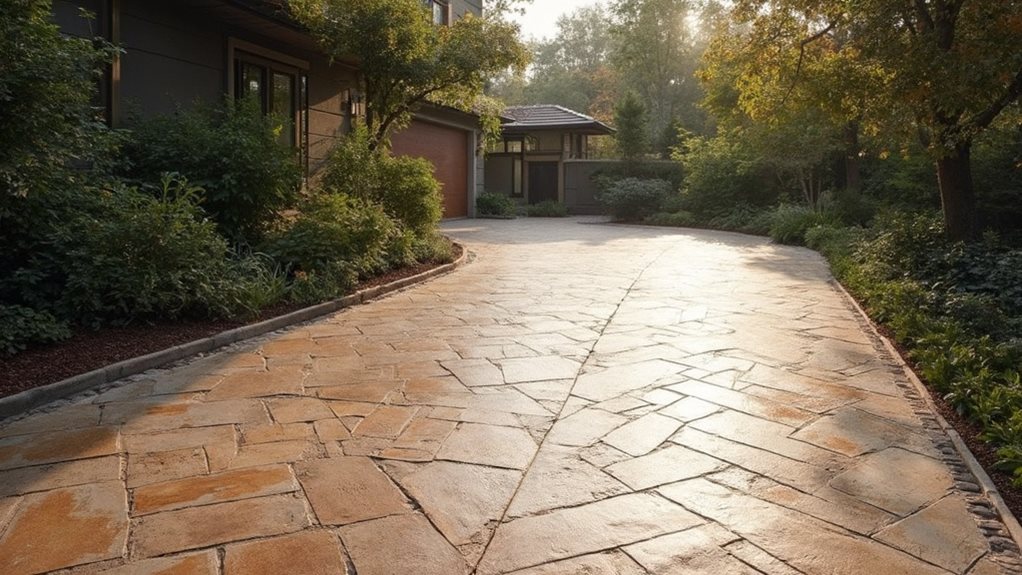
Sure, there's a zen-like appeal to minimalist concrete driveways, but let's not overlook the opportunity to showcase creativity through patterned concrete.
You don't have to be an artist to turn your driveway into a masterful display either. It's simple, costs less than you think, and allows you to express your personality right from the curb.
- Consider geometric patterns. They're classy, versatile and can match the style of any home.
- Play around with color. Use concrete dyes or stains to inject some life into your patterned driveway. There's no need to stick to greys.
- Try out a textured pattern. A somewhat bumpy or uneven surface can create an interesting visual effect.
With proper maintenance services, your patterned concrete driveway can maintain its beauty for up to 30 years.
Give patterned concrete a chance! You won't look back.
Showcasing Exposed Aggregate Concrete Driveways
A surprising number of homeowners overlook the transformative power of exposed aggregate concrete driveways. They offer far more than sturdiness; they're a canvas for creating aesthetic marvels. By exposing the stones within the concrete mix, you tap into a variety of textures and colors inherent in the aggregate.
Don't shy away from the inviting opportunity to experiment with different aggregates, customized to complement your home's exterior. It's your pathway to making an immediate, enthralling impression.
Bright quartz could spark a sleek, modern vibe, while darker granites might evoke a more traditional, cozy aura.
With proper maintenance, these stunning driveways can maintain their beauty for up to 30 years.
Adding Curbs and Borders to Enhance Your Concrete Driveway

Even though your concrete driveway may be solid and functional, without the right finesse, it might end up appearing bland and uninspiring.
This is where the magic of adding curbs and borders come in. Not only do they enhance the visual appeal, but they also serve an important utility purpose, preventing run-off and soil erosion.
- Choose the right materials: You can select from a wide variety like cobblestone, bricks or natural stones. Each bring a distinct character to your driveway.
- Design it well: Focus on your home's architectural style and try to complement it. Mix and match materials for a customised look.
- Hire professionals: For exceptional finish, don't hesitate to hire a pro. They'll guarantee the curb blends seamlessly with your driveway, enhancing your home's curb appeal.
Our professional assistance throughout the project ensures your driveway borders align perfectly with Henderson design criteria.
Exploring Stamped Concrete Driveway Ideas
While upgrading your driveway, introducing stamped concrete can result in both aesthetic appeal and durability.
You're sure to find a design that reflects your unique personality as stamped concrete comes in a variety of patterns, like brick, slate, or even wood. Want a pop of color? Mix in some dye during the concrete's preparation and be a part of a community that dares to stand out.
Brighten your space with stamped concrete; choose from patterns like brick, slate, or wood and sprinkle in some color with a dash of dye.
This low maintenance option not only handles the weather but also withstands wear and tear. Smooth under tires and foot, this resilient surface could also add value to your home.
As part of the stamped concrete tribe, you'll enjoy a durable driveway with long-lasting beauty that truly feels like your own.
With expert craftsmanship from skilled professionals, your stamped concrete driveway will maintain its quality for years to come.
Tips for Maintaining Your Concrete Driveway
If you've invested in a concrete driveway, proper care and maintenance are needed to keep it in pristine condition.
It's not enough just to look good, it's really about being part of a home where everything works perfectly and is well maintained.
Here's a three-step approach to help you do this:
- Regular Cleaning: Remove leaves and debris promptly to prevent stains. A power wash twice a year will keep it shining like new.
- Immediate Repair of Cracks: Fix them quickly before they expand. A smooth surface makes you proud and provides a safer path for your family.
- Application of Sealant: A quality sealant every 2-3 years is our secret weapon against harsh weather and daily wear and tear.
You are part of our community, and this is your guide to keep your home beautiful and safe.
Frequently Asked Questions
What Is the Lifespan of a Concrete Driveway?
You're probably wondering how long a concrete driveway lasts. On average, it's good for about 30 years. However, its lifespan can extend up to 50 years with diligent maintenance and weather conditions permitting.
Can a Concrete Driveway Be Repaired or Must It Be Replaced?
Absolutely, you can repair your concrete driveway! It doesn't require total replacement for minor damages. Patching cracks or resurfacing are options. However, if it's extensively cracked, you might need to contemplate replacing it entirely.
How Does a Concrete Driveway Handle Heavy Vehicle Loads?
Your concrete driveway can handle heavy vehicle loads remarkably. It's designed to support substantial weight. However, make sure you seal it regularly because, without proper maintenance, even the strongest concrete can develop cracks over time.
What Are Some Eco-Friendly Options for Concrete Driveways?
You've asked about eco-friendly solutions for driveways. One stellar choice is permeable concrete – it absorbs water, reduces runoff, and lets nature do the irrigating. It's fantastic at supporting green practices and keeps your driveway efficient.
Does a Concrete Driveway Increase Home Resale Value?
Absolutely, a concrete driveway can substantially boost your home's resale value. It's durable, low-maintenance, and gives a polished look that attracts buyers. Investing in a concrete driveway is definitely worthwhile.
Concrete Driveways Repair and Resurfacing Options
Concrete driveway repair and resurfacing options range from DIY solutions for minor damage to professional resurfacing services for major deterioration. Common issues like shrinkage cracks, surface scaling, and spalling can be addressed through specialized crack fillers, patching compounds, or complete overlay systems. Small cracks under 1/4 inch typically require simple fillers, while larger damage may need two-stage repairs with backer rods. Professional resurfacing with polymer-modified overlays offers a cost-effective alternative to replacement, with proper maintenance extending surface life beyond 25 years.
Expert Highlights
- Common repair options include crack filling with latex or epoxy compounds for hairline cracks and patching compounds for larger damages.
- Professional resurfacing with micro-toppings or polymer-modified overlays provides a cost-effective alternative to complete driveway replacement.
- DIY repairs are possible for small cracks and surface spalling using basic tools like wire brushes and concrete crack fillers.
- Resurfacing can extend driveway life by 25+ years when properly installed by professionals with specialized equipment and materials.
- Regular maintenance, including sealer application every 3-5 years and annual cleaning, helps prevent serious concrete deterioration.
Common Types of Concrete Driveway Damage
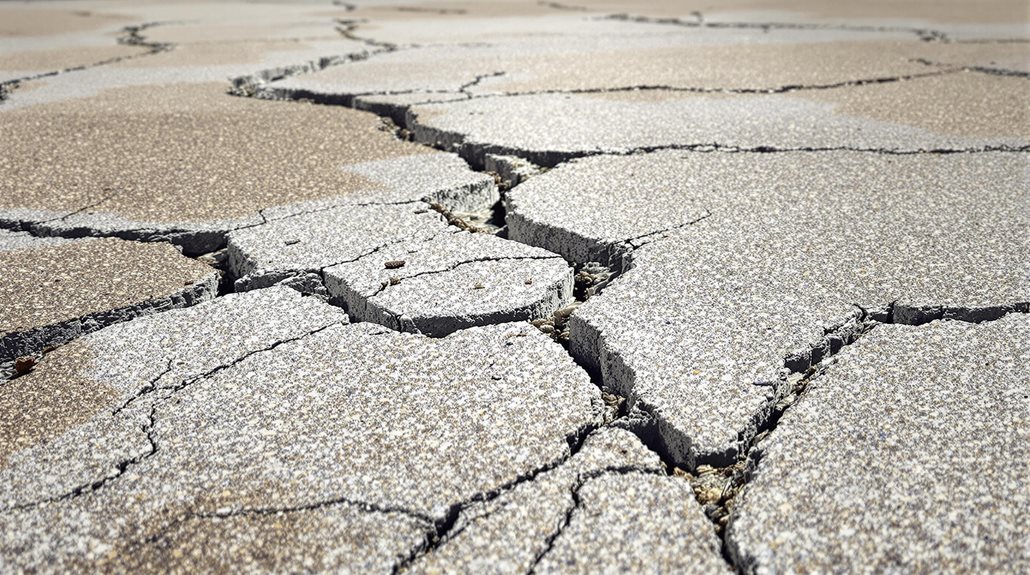
Several distinct types of damage commonly afflict concrete driveways, ranging from superficial cracking to severe structural deterioration. The most frequent issues include shrinkage cracks, which develop during the initial curing process, and settlement cracks that form when the underlying soil shifts or compresses.
Concrete driveways face various forms of damage, from minor surface cracks to major structural issues caused by soil movement and improper curing.
Surface scaling, where the top layer flakes or peels away, often results from freeze-thaw cycles and the use of deicing chemicals. Spalling, characterized by concrete chunks breaking away from the surface, typically occurs due to poor installation practices or water penetration into the substrate.
Other prevalent forms of damage include joint deterioration, where the expansion joints between concrete sections break down, and surface discoloration caused by chemical exposure, organic growth, or improper sealing techniques.
These issues can compromise both the driveway's structural integrity and aesthetic appeal. With proper maintenance techniques including regular cleaning and resealing every three years, many of these common problems can be prevented or minimized.
Crack Filling and Patching Solutions
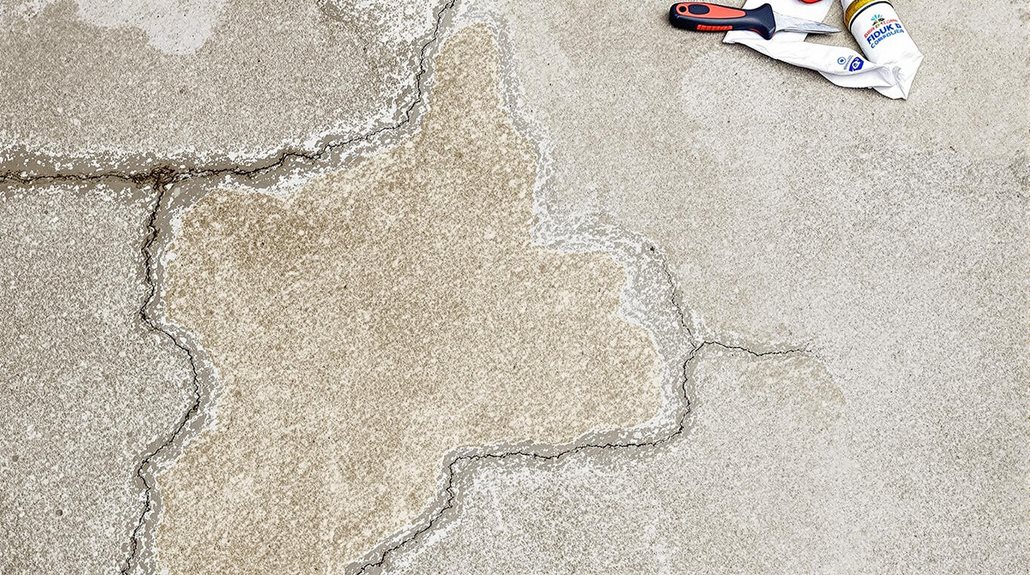
Once concrete damage has been identified, proper repair techniques can restore both functionality and appearance to the affected areas.
Professional-grade concrete crack fillers and patching compounds, specifically formulated for different crack widths and depths, provide reliable solutions for various types of damage.
For hairline cracks under 1/8 inch wide, latex-based crack fillers or epoxy compounds can be injected directly into the openings, creating a durable seal that prevents moisture infiltration.
Wider cracks and shallow surface damage require patching compounds containing Portland cement, fine aggregates, and polymer additives for enhanced bonding.
Deep cracks exceeding 1/4 inch typically need two-stage repairs, starting with a flexible backer rod installation followed by application of a self-leveling polyurethane sealant that maintains flexibility through seasonal temperature changes.
With proper maintenance, these repair solutions can help extend your concrete's lifespan up to 30 years.
Professional Resurfacing Methods
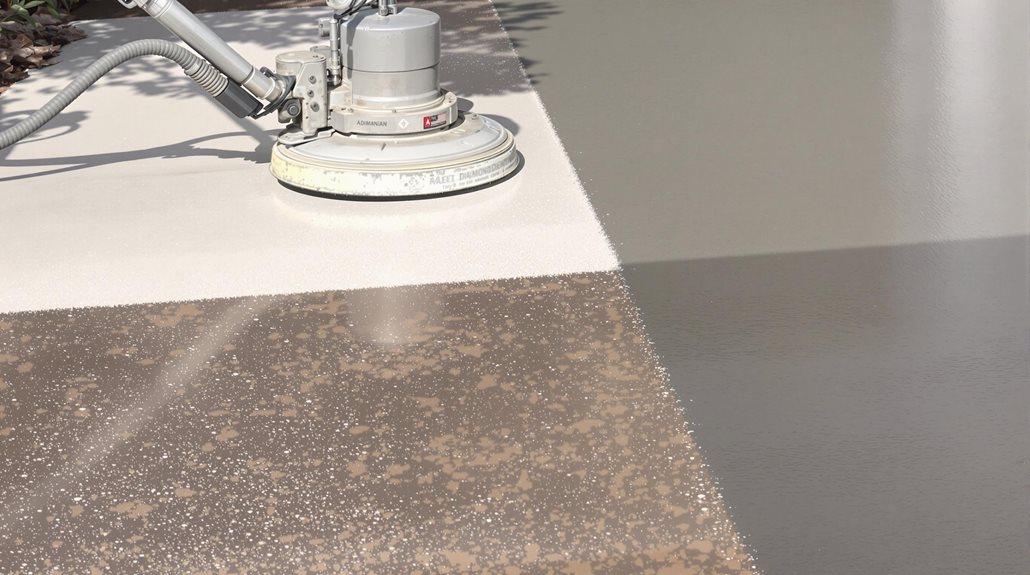
Professional concrete resurfacing transforms deteriorated driveways through the application of specialized overlay materials, ranging from thin micro-toppings to heavy-duty polymer-modified overlays. These solutions provide homeowners with cost-effective alternatives to complete driveway replacement. Certified installation teams ensure proper application techniques and long-lasting results that can exceed 25 years of service life.
| Resurfacing Type | Thickness | Durability |
|---|---|---|
| Micro-topping | 1/16"-1/8" | 5-7 years |
| Standard Overlay | 1/4"-1/2" | 8-12 years |
| Polymer-modified | 1/2"-3/4" | 15-20 years |
The resurfacing process involves thorough surface preparation, including pressure washing and repair of existing damage, followed by the application of a bonding agent. Contractors then apply the chosen overlay material using specialized equipment, ensuring proper thickness and texture. After curing, the surface receives a protective sealer to enhance longevity and maintain aesthetic appeal.
DIY Repair Techniques and Tools
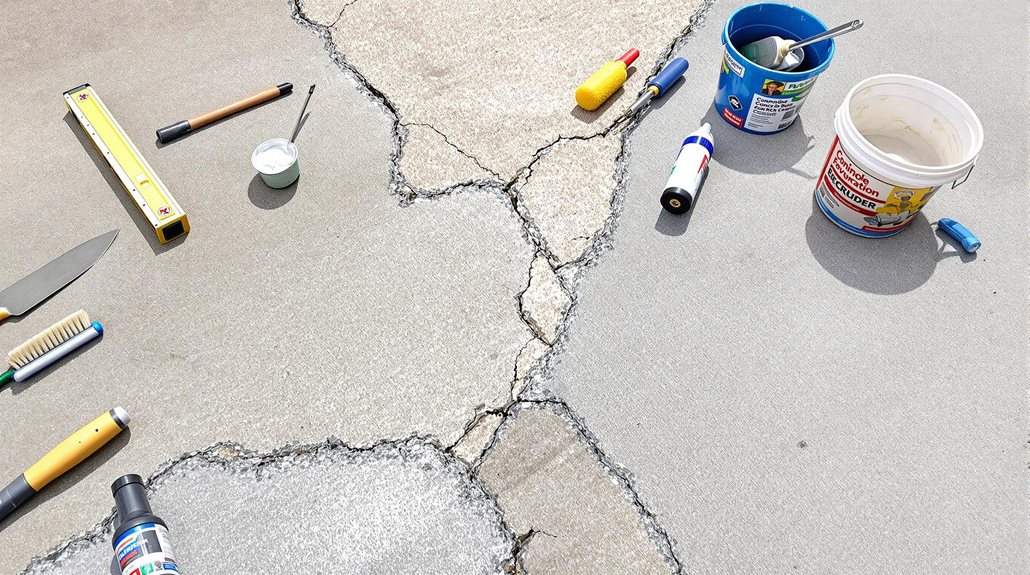
Homeowners can effectively address minor concrete driveway damage through carefully selected DIY repair methods, utilizing readily available tools and materials from home improvement stores.
Common repair tools include wire brushes, trowels, mixing buckets, and concrete patching compounds specifically formulated for residential use.
For small cracks under 1/4 inch wide, applying a concrete crack filler with a caulking gun provides a straightforward solution, while larger cracks may require chiseling to create a clean V-shaped groove before filling.
Surface spalling can be addressed using a concrete resurfacer, applied with a squeegee or long-handled brush after thorough cleaning and priming of the affected area.
Essential safety equipment includes protective gloves, safety glasses, and knee pads, ensuring proper protection during repair work.
For complex repairs beyond DIY capabilities, Twin Cities contractors offer professional concrete repair services with guaranteed workmanship.
Preventive Maintenance and Protective Coatings
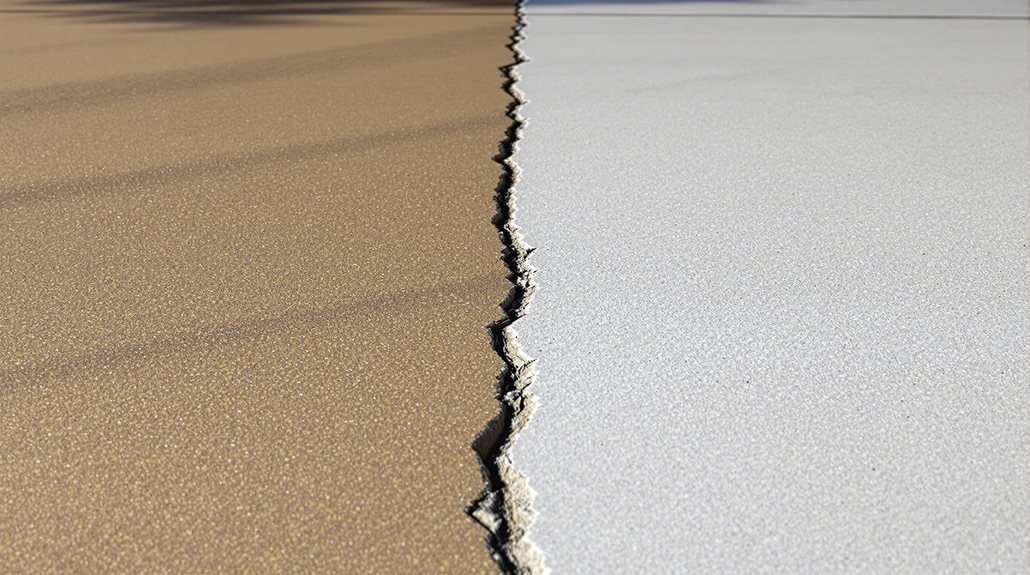
Regular maintenance combined with appropriate protective coatings can greatly extend the lifespan of concrete driveways, preventing costly repairs and structural deterioration.
Homeowners should apply penetrating sealers every 3-5 years to protect against moisture infiltration, while ensuring proper drainage through annual cleaning and inspection of expansion joints.
Regular concrete sealing and joint maintenance are essential safeguards against moisture damage and ensure lasting driveway performance.
Surface coatings, including acrylic-based sealers and epoxy compounds, provide additional protection against chemical exposure, UV damage, and freeze-thaw cycles. These treatments create an impermeable barrier that prevents salt, oil, and other corrosive substances from penetrating the concrete matrix.
Maintaining proper grading and addressing minor cracks promptly helps prevent water accumulation, which can lead to subsurface erosion and structural compromise.
Professional pressure washing, combined with careful monitoring of surface conditions, enables early detection of potential issues before they become serious problems.
Working with certified concrete experts ensures proper application of sealants and precise control joint placement for optimal protection against environmental factors.
Frequently Asked Questions
How Long Should I Wait Before Parking on a Newly Repaired Driveway?
Most homeowners should wait at least 24-48 hours before parking on a repaired driveway, though heavy vehicles may need to wait up to seven days for ideal curing and strength.
Will the Color of Repaired Areas Match My Existing Concrete Driveway?
Repaired areas may initially appear lighter than existing concrete. Over time, weathering and use will help blend the colors, though perfect matching can be challenging for most homeowners.
Can Concrete Repairs Be Done in Cold or Rainy Weather?
Concrete repairs require temperatures above 40°F and dry conditions. Most contractors avoid working in rain or cold weather since moisture and freezing can compromise the repair's integrity.
What Is the Average Lifespan of a Repaired Concrete Driveway?
Properly repaired driveways typically last 8-15 years, though experiences vary among homeowners. Quality repairs with professional-grade materials and correct installation techniques can extend lifespans markedly beyond these averages.
Should I Repair or Completely Replace My Concrete Driveway?
The decision depends on damage severity: repair when cracks and damage affect less than 25% of the surface; opt for replacement when structural issues or widespread deterioration exists.
Expert Final Thougts
Maintaining a concrete driveway requires understanding damage patterns, repair methods, and preventive measures. Whether opting for professional resurfacing or DIY solutions, proper technique and material selection remain critical for lasting results. Regular inspections, timely repairs, and protective sealants can extend driveway longevity while minimizing repair costs. With appropriate care and maintenance, concrete driveways can provide decades of reliable service while preserving property value.
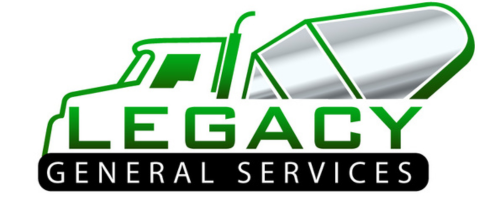
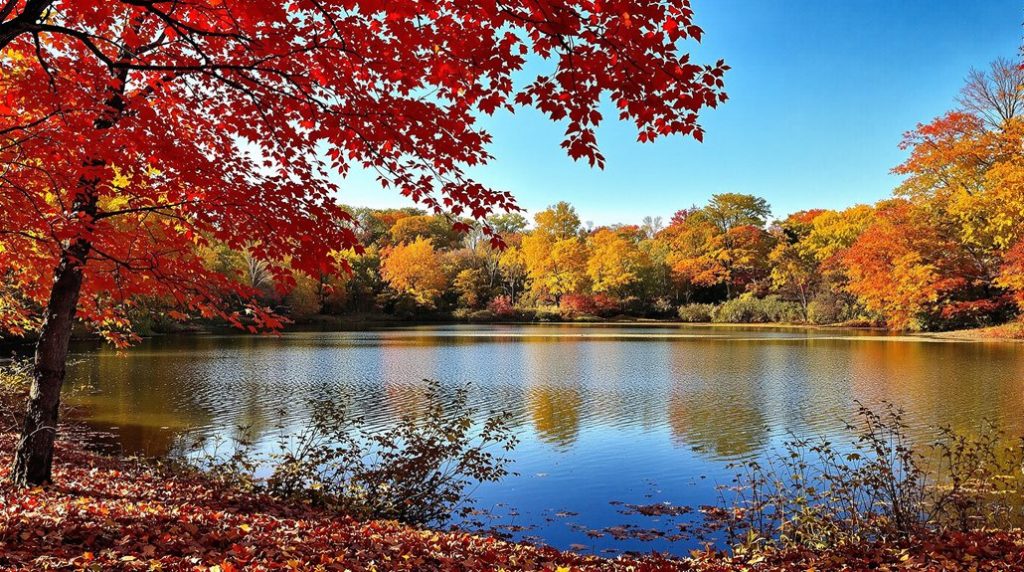
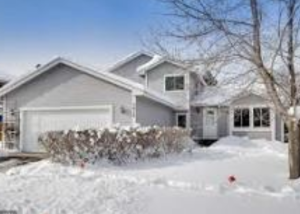 Expert Final Thoughts
Expert Final Thoughts